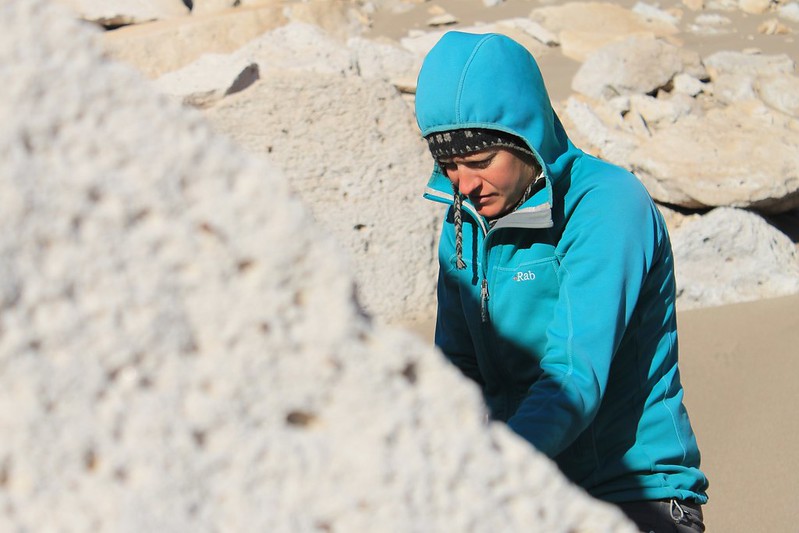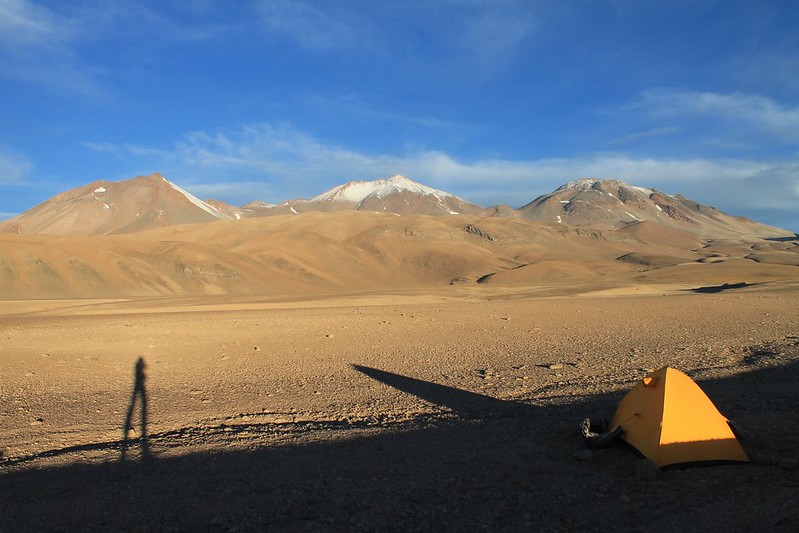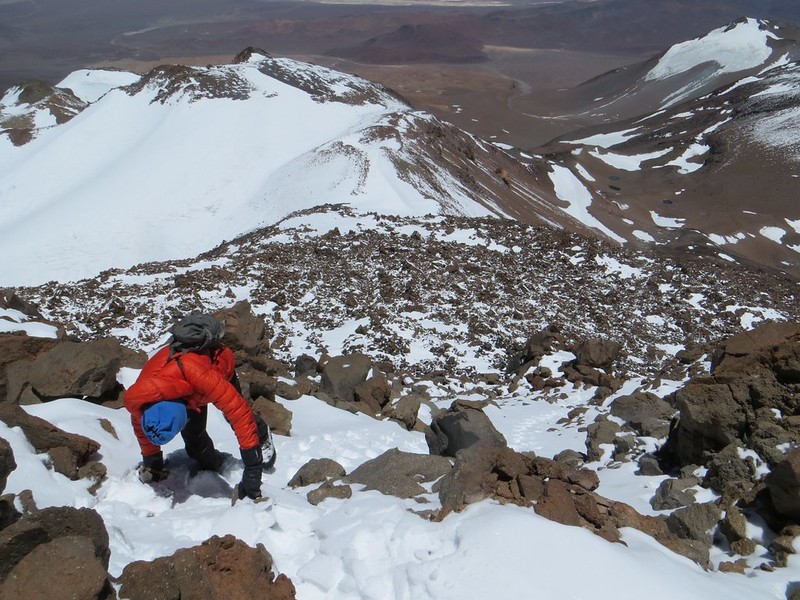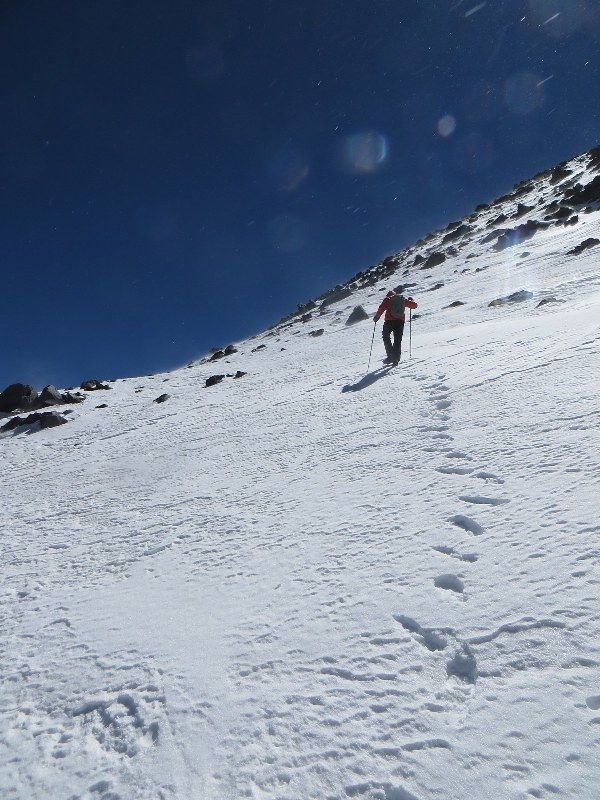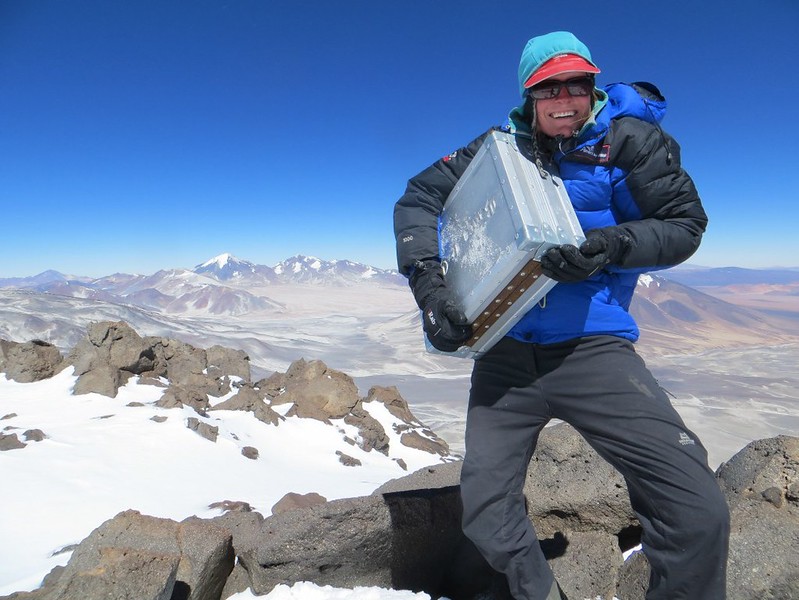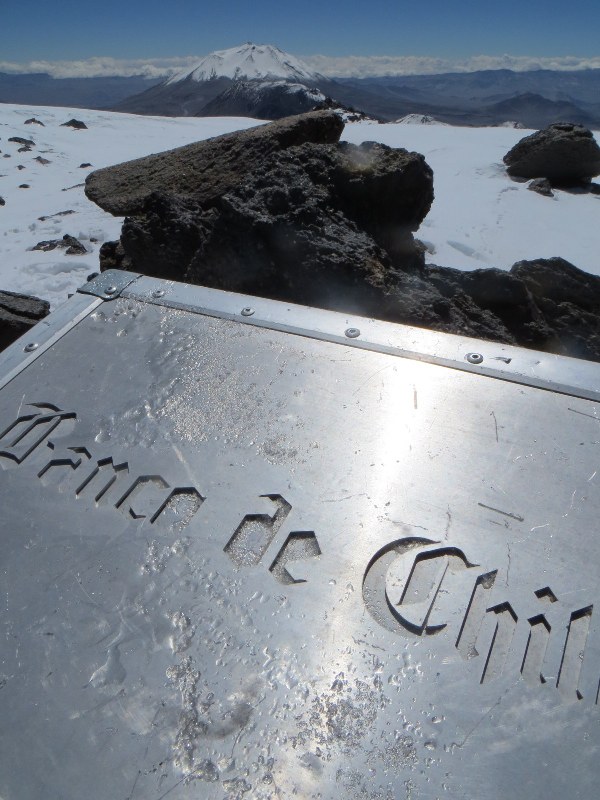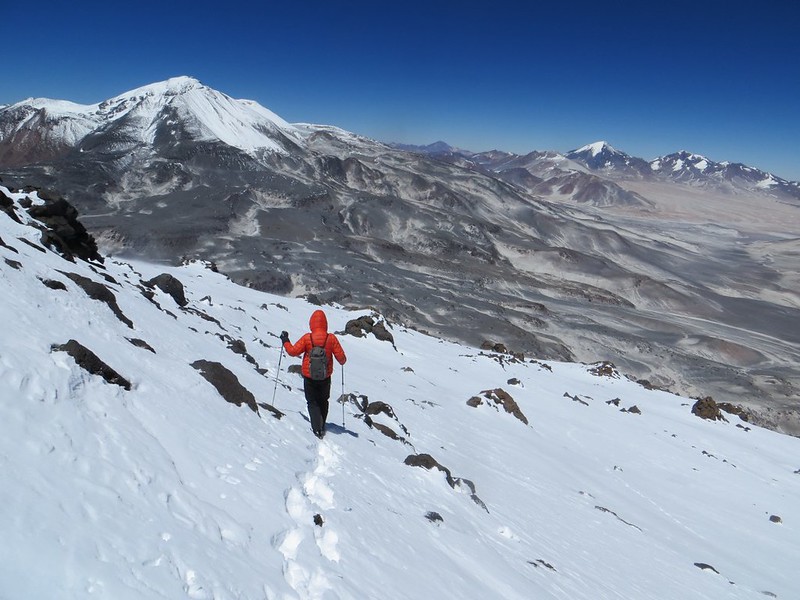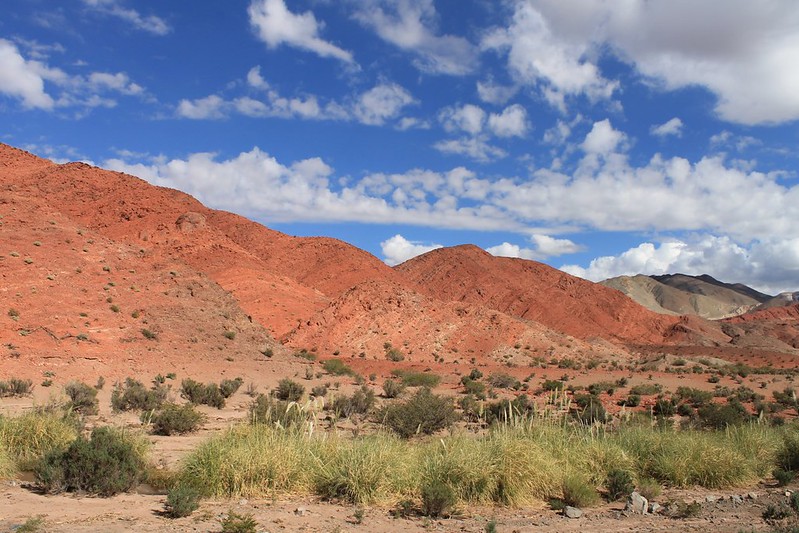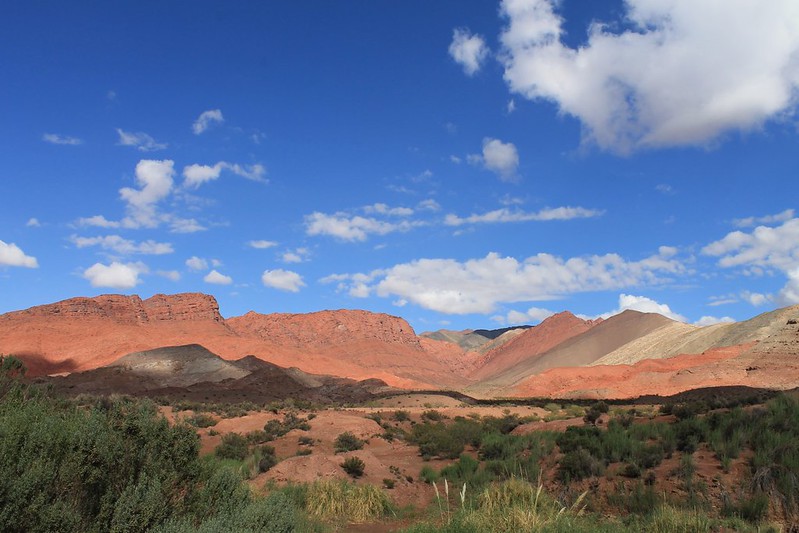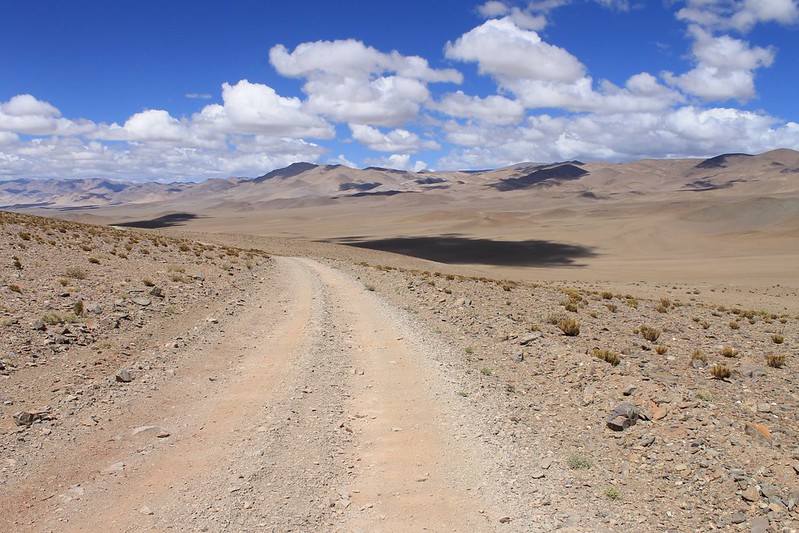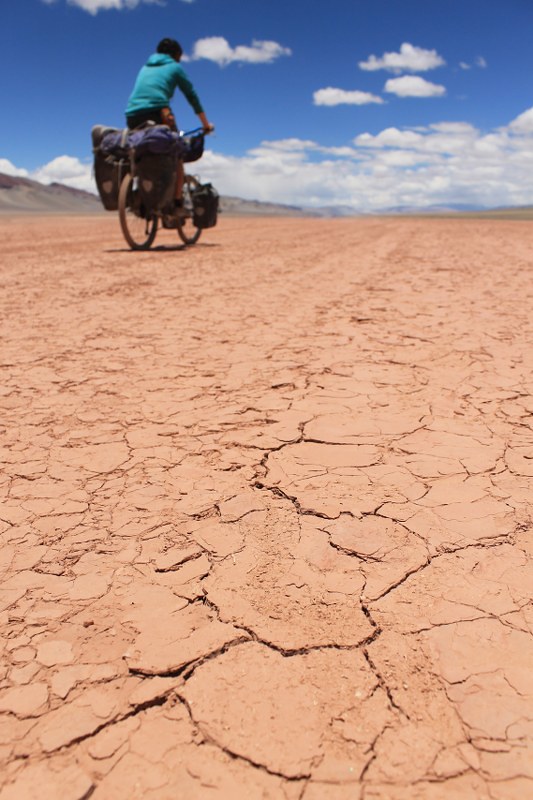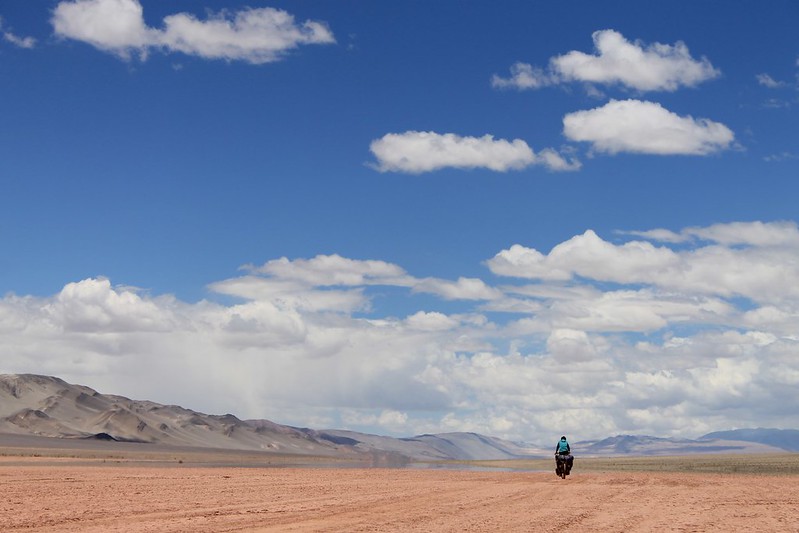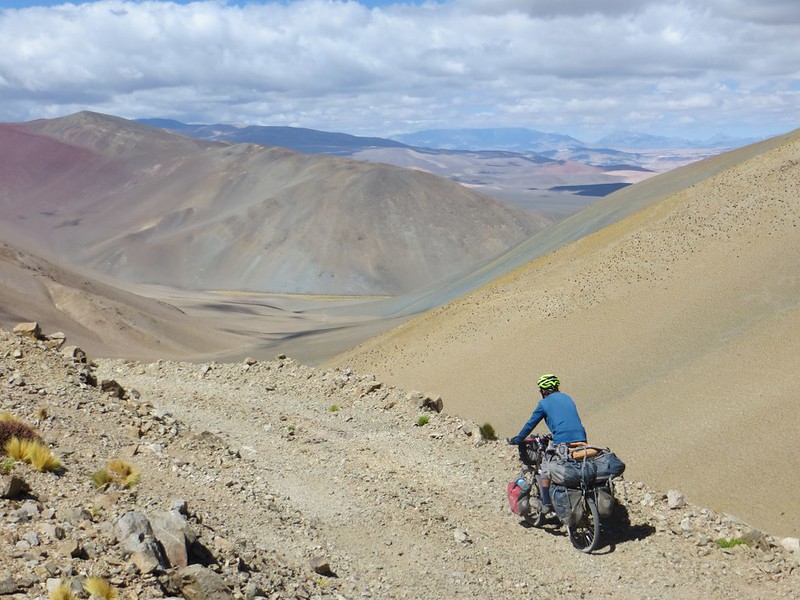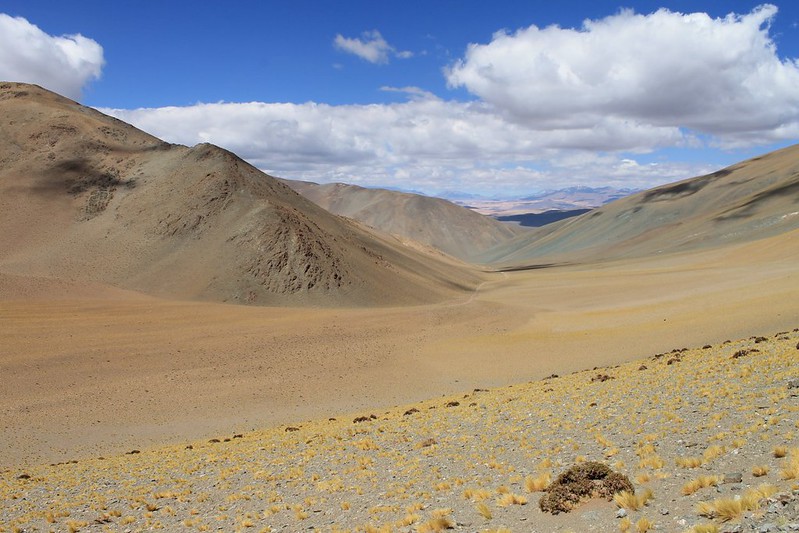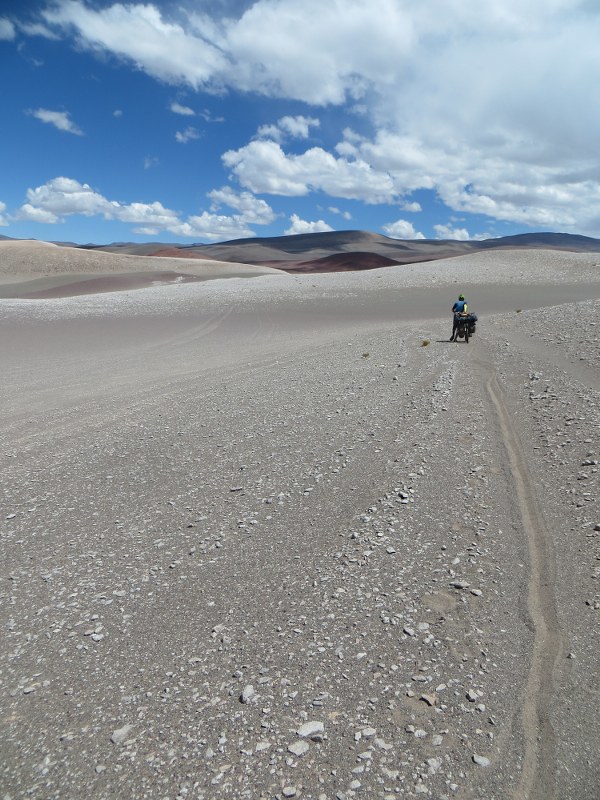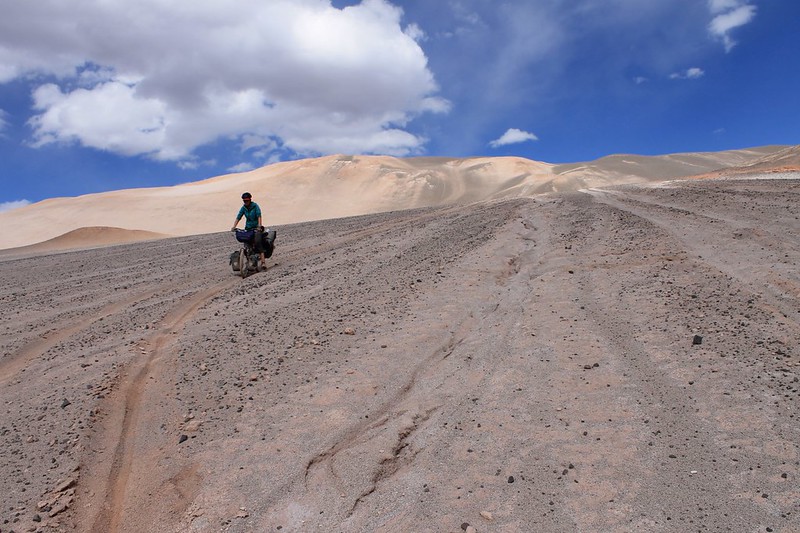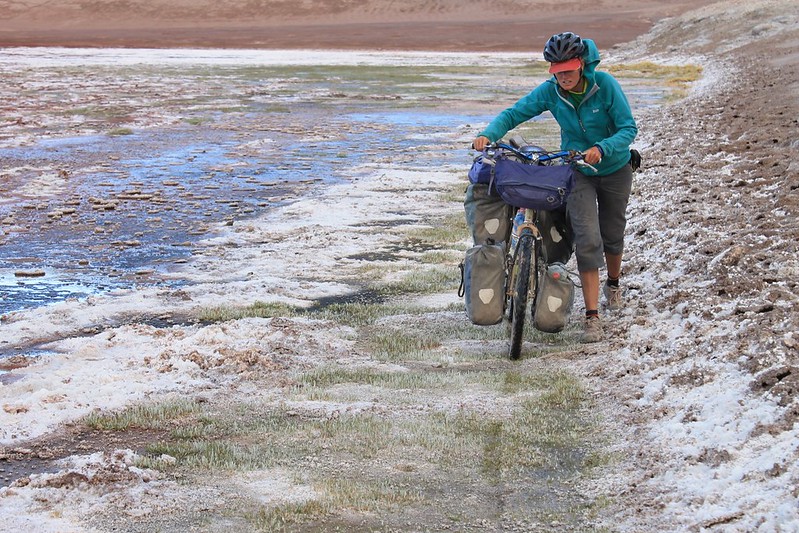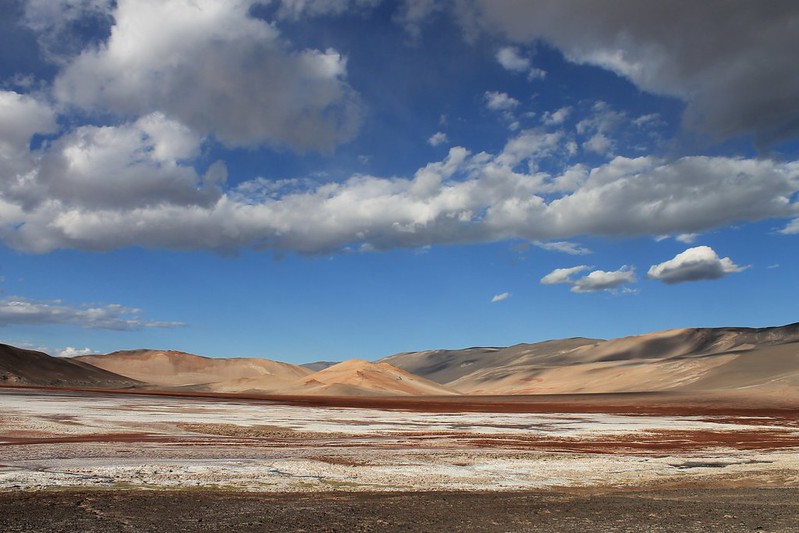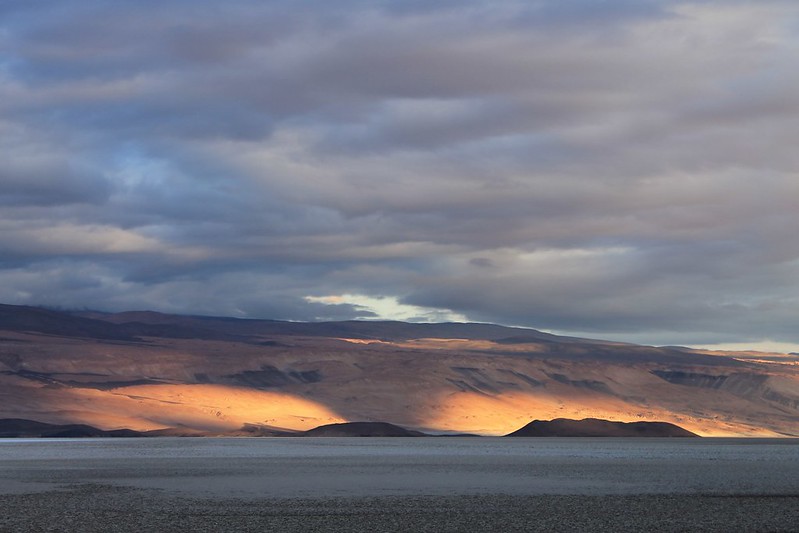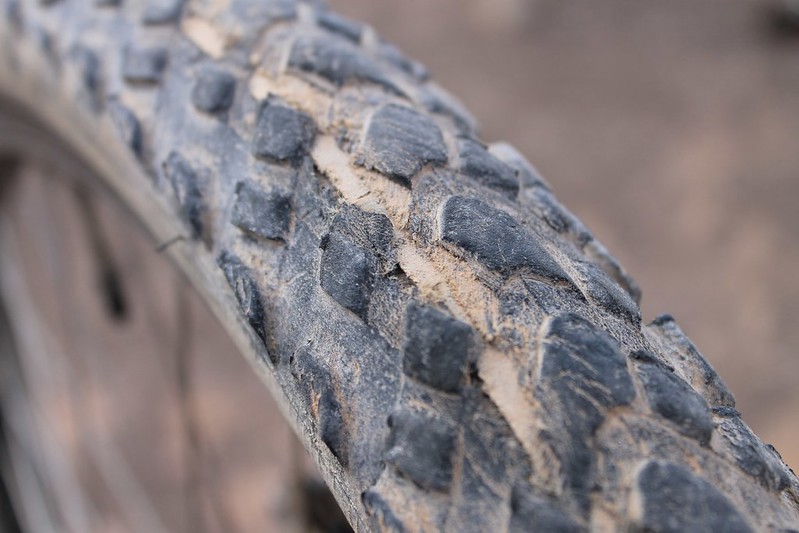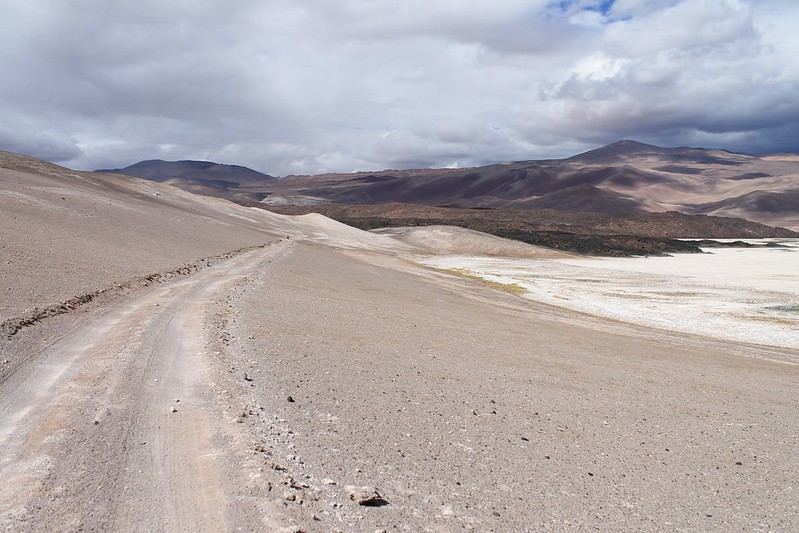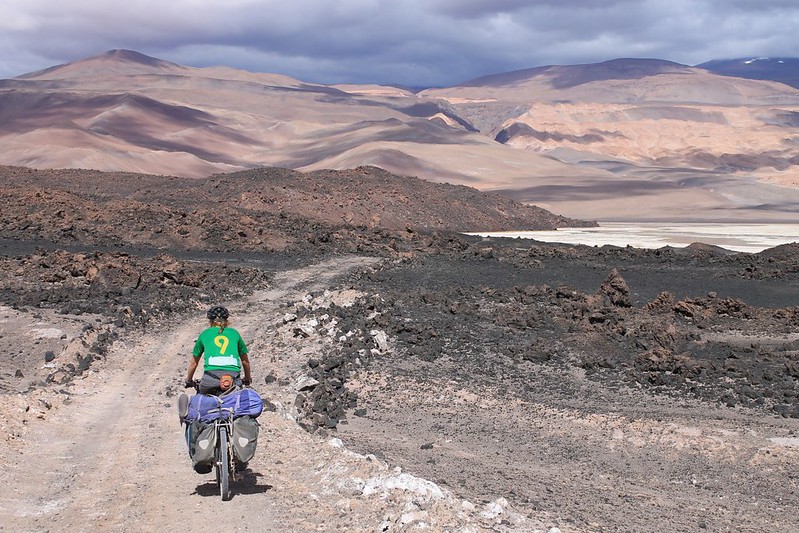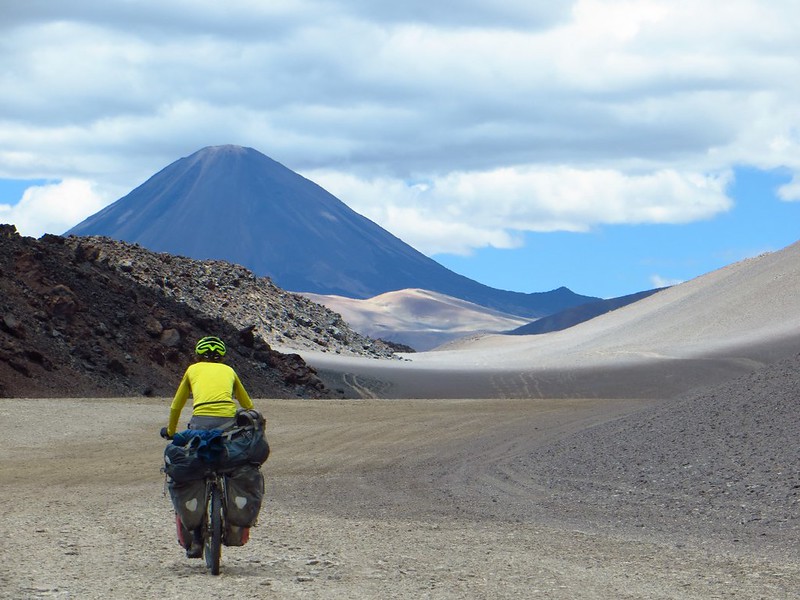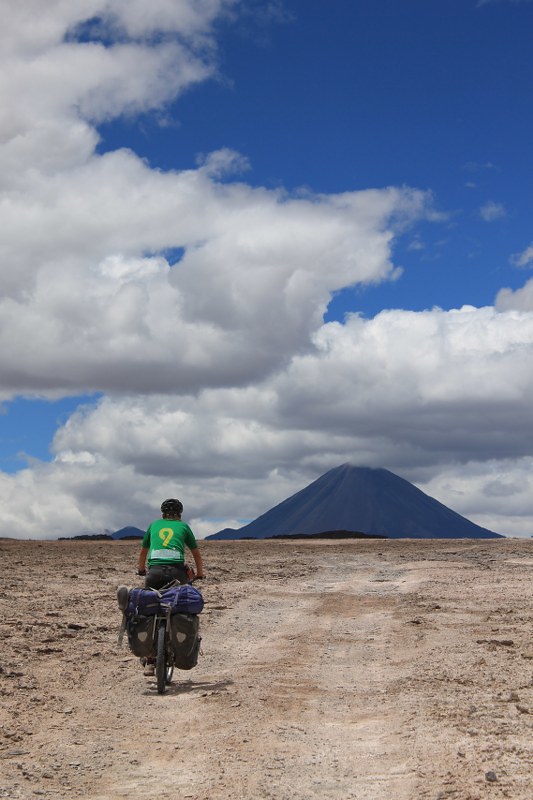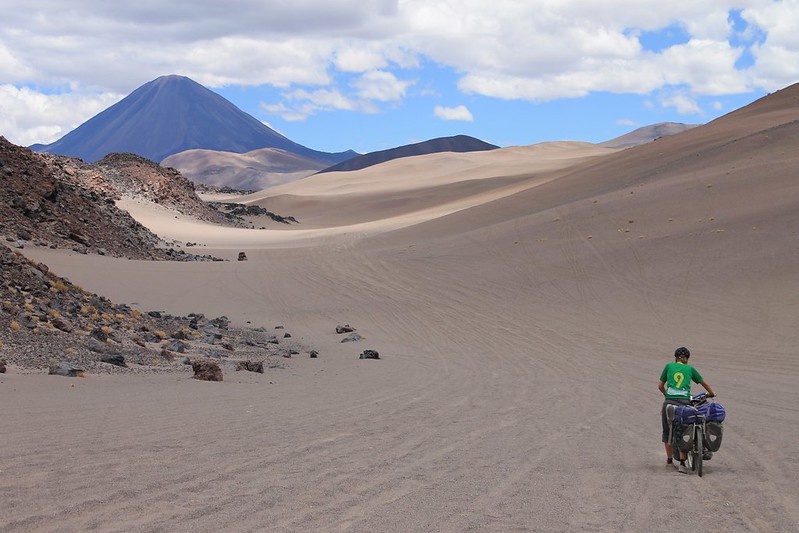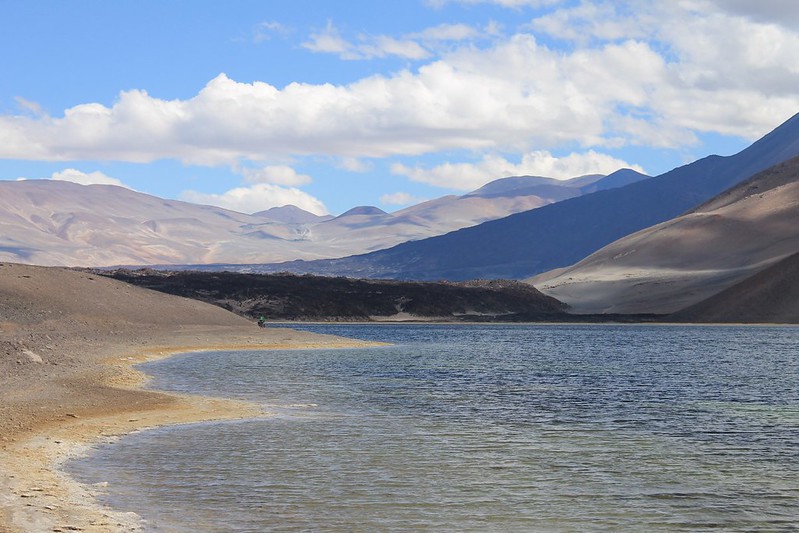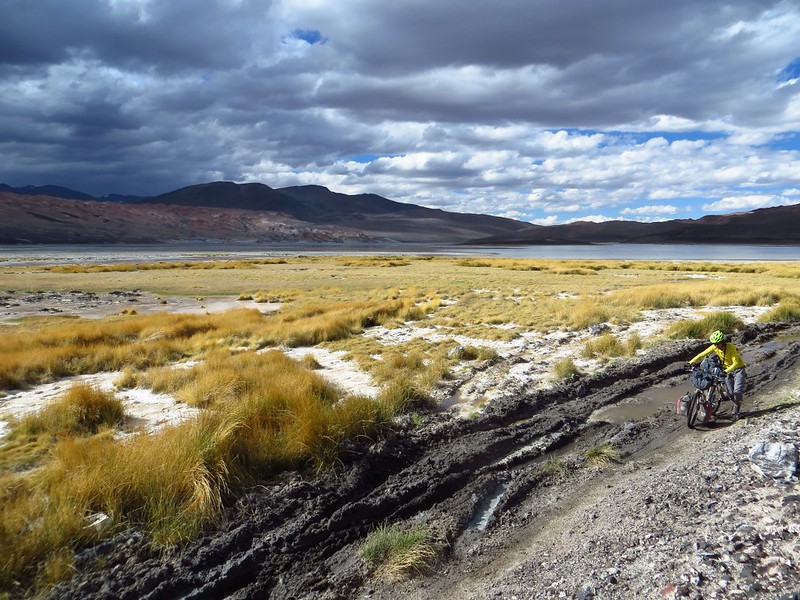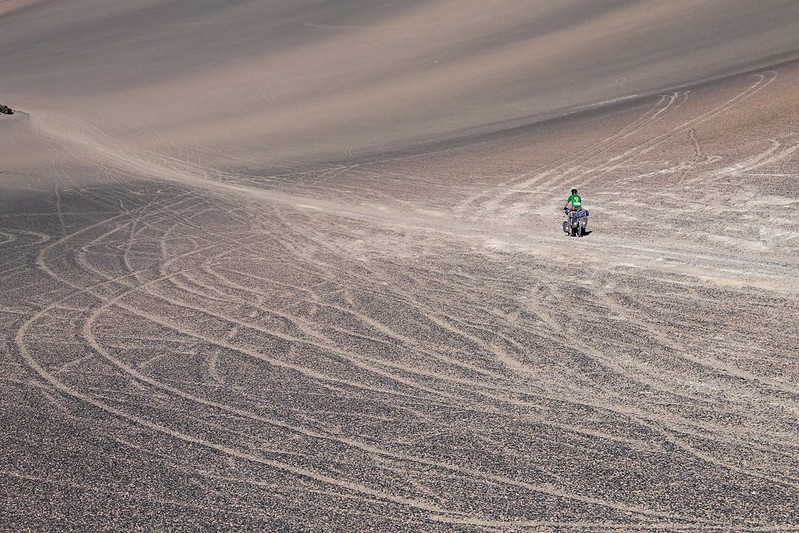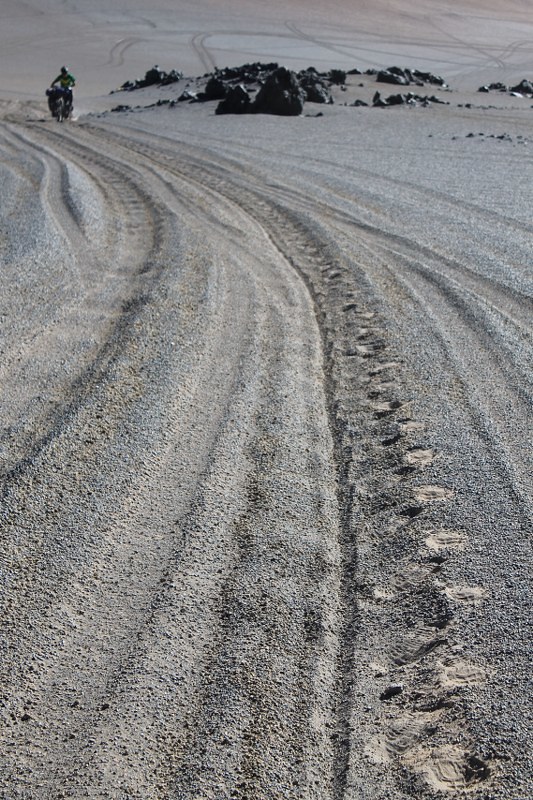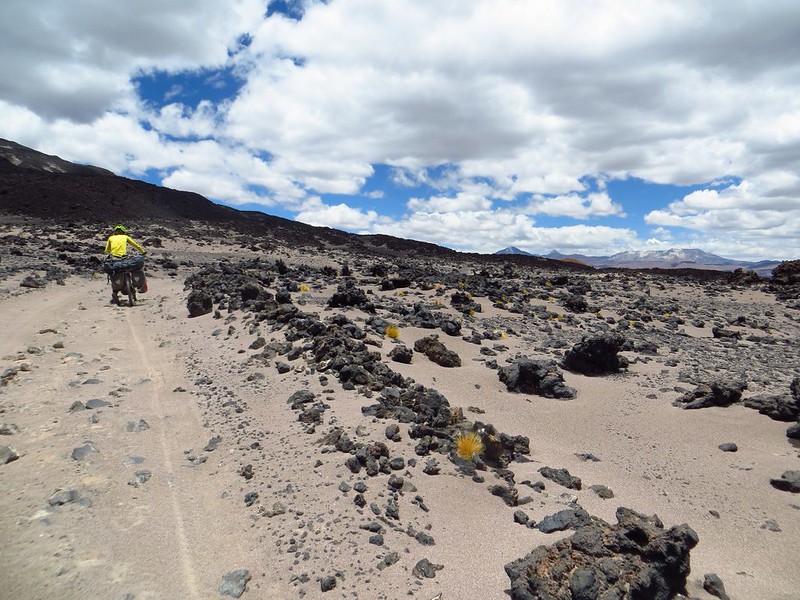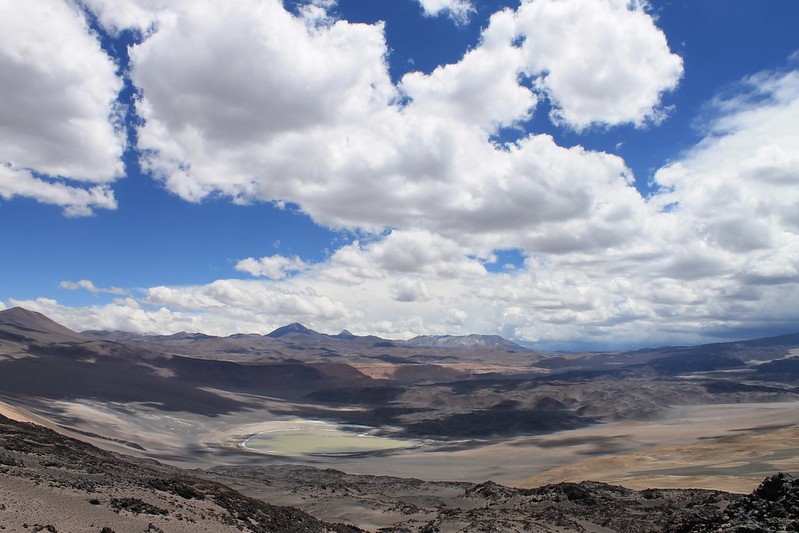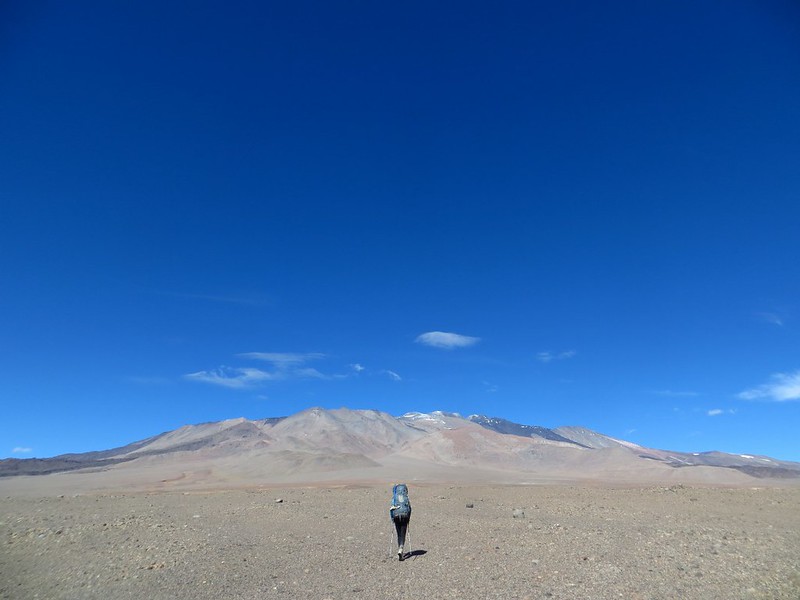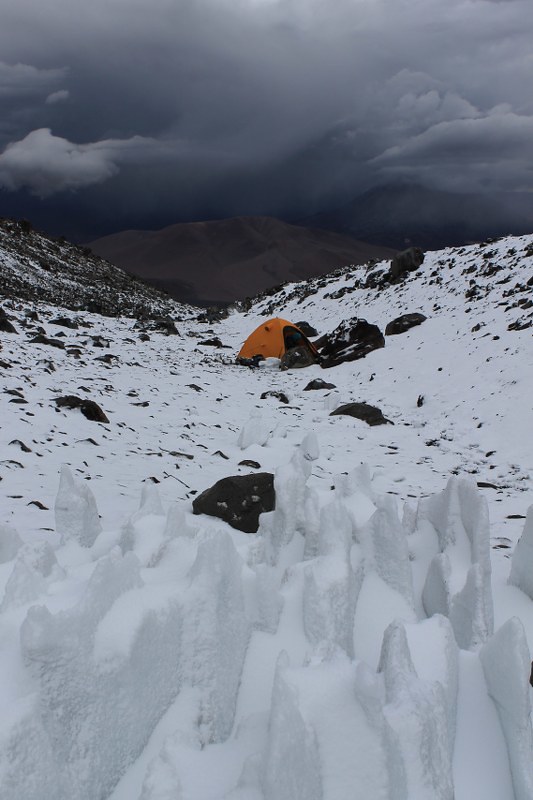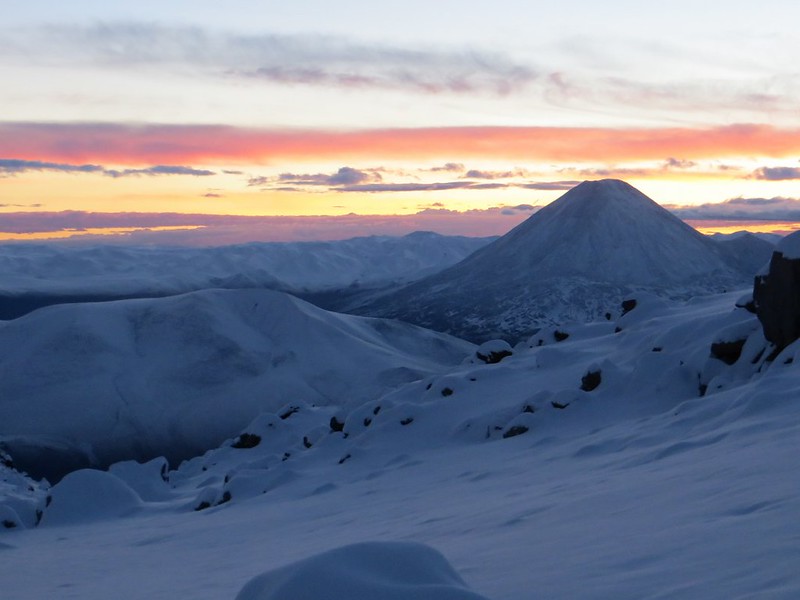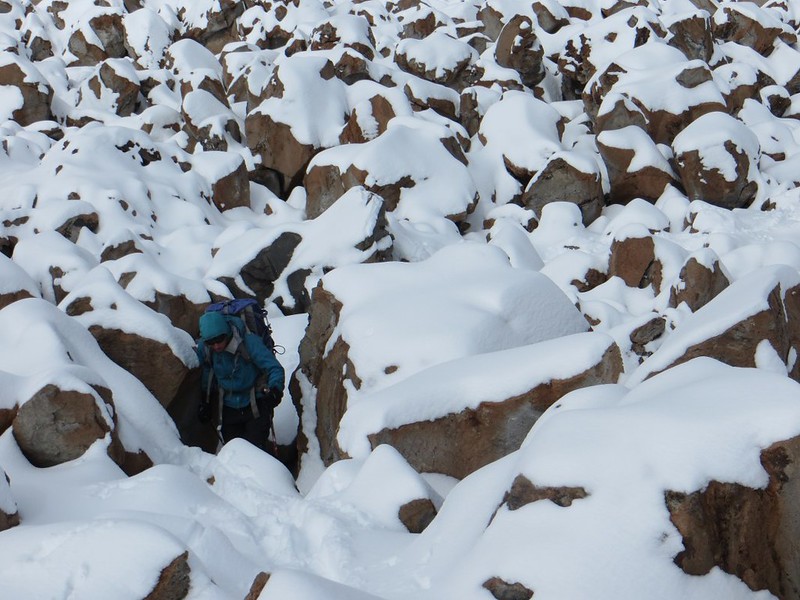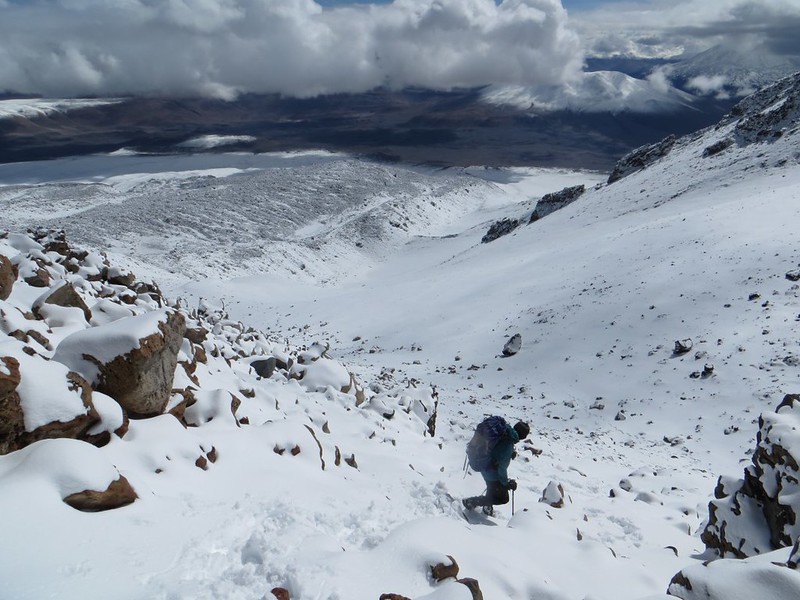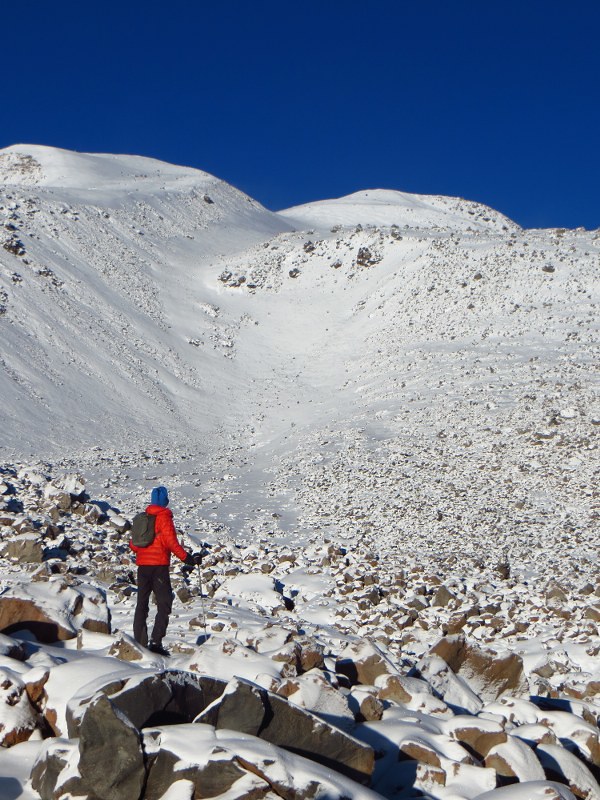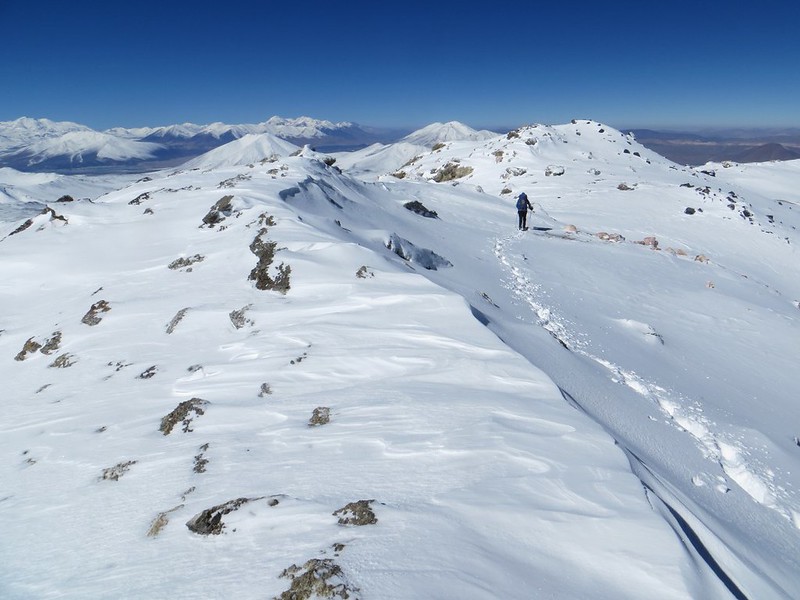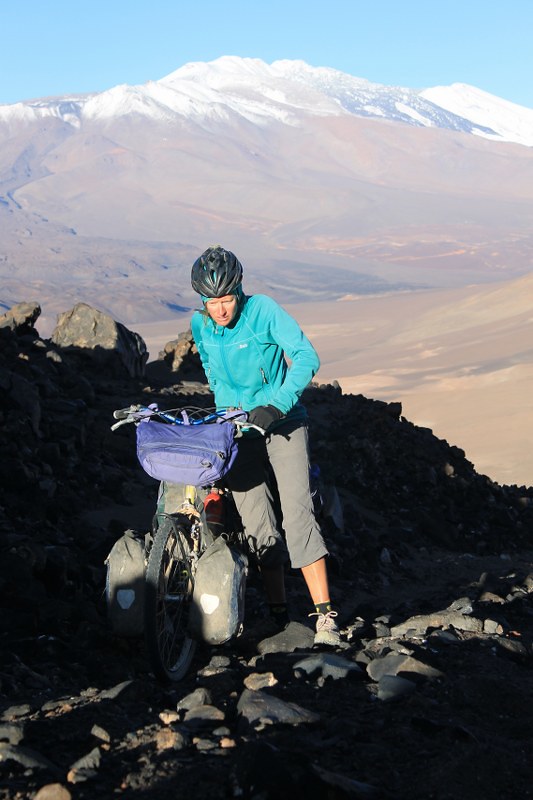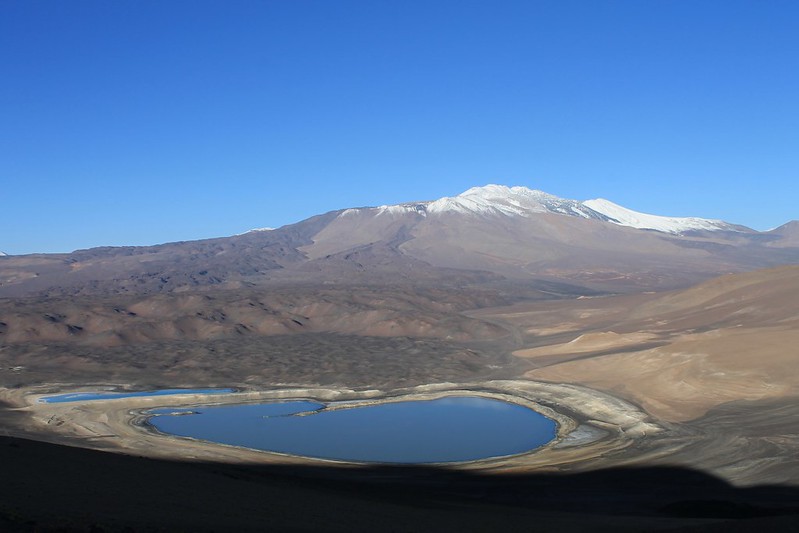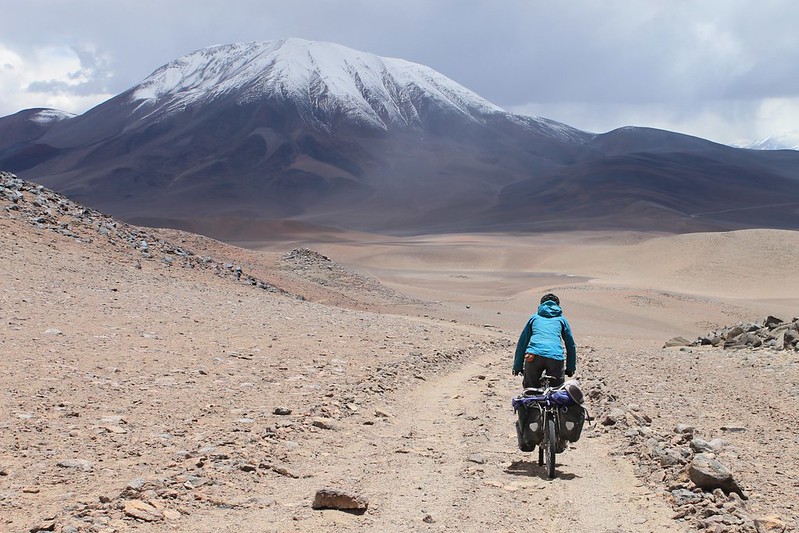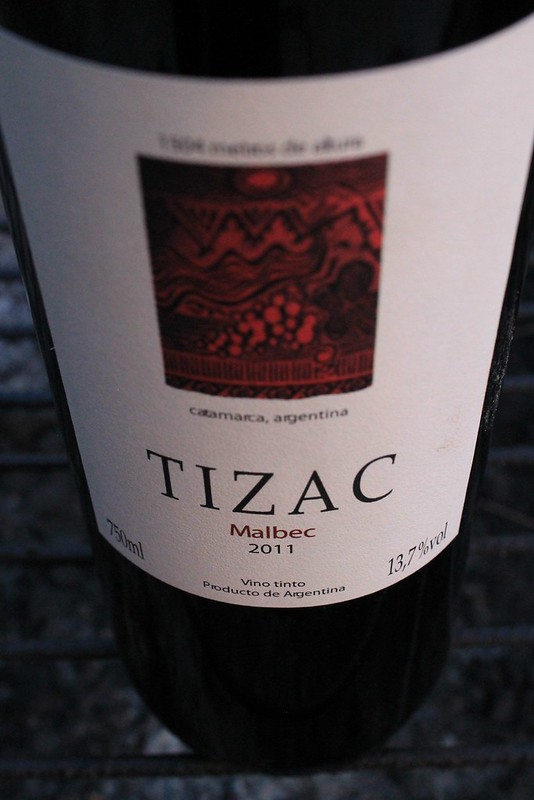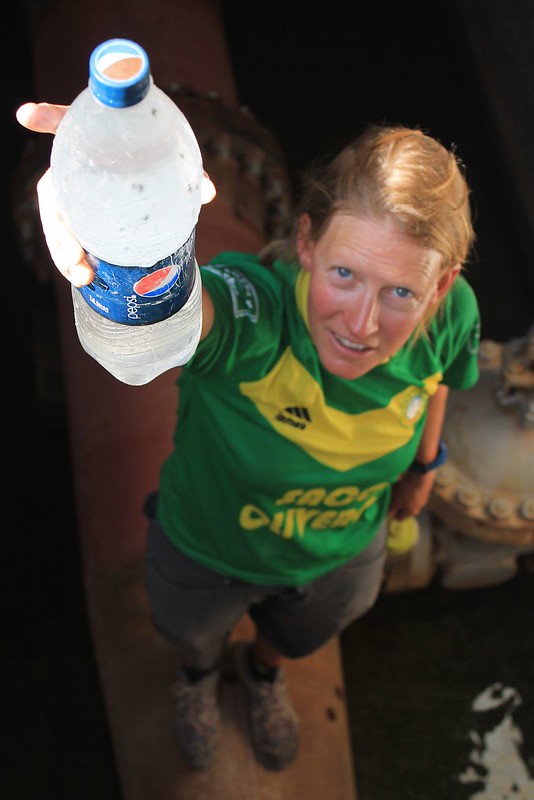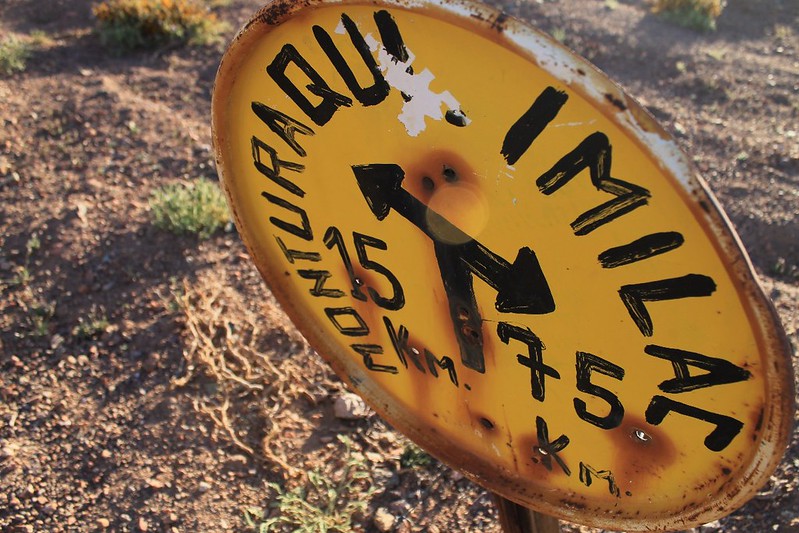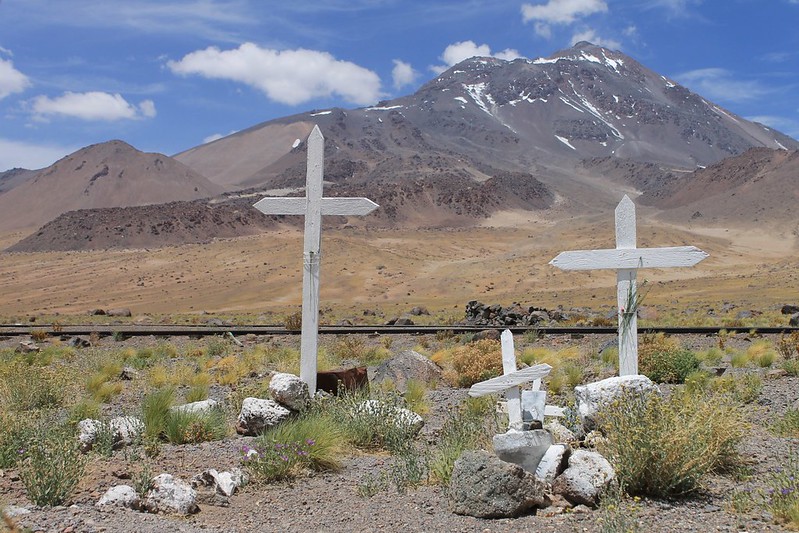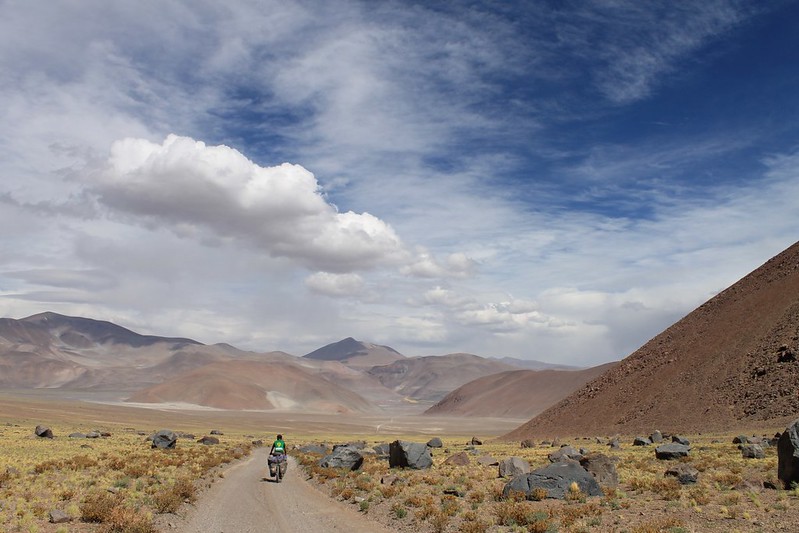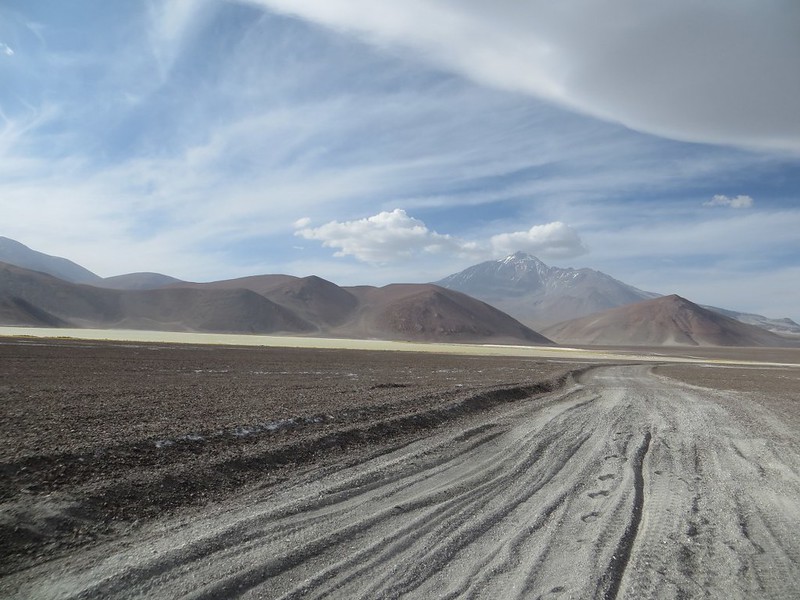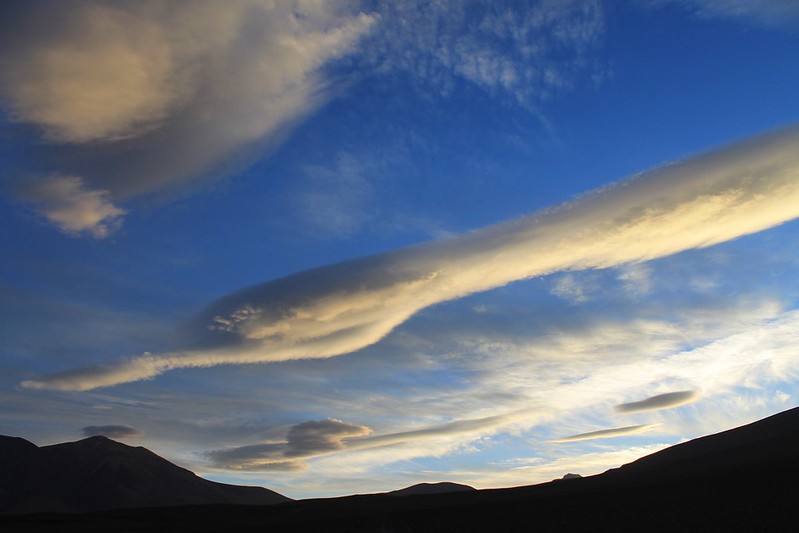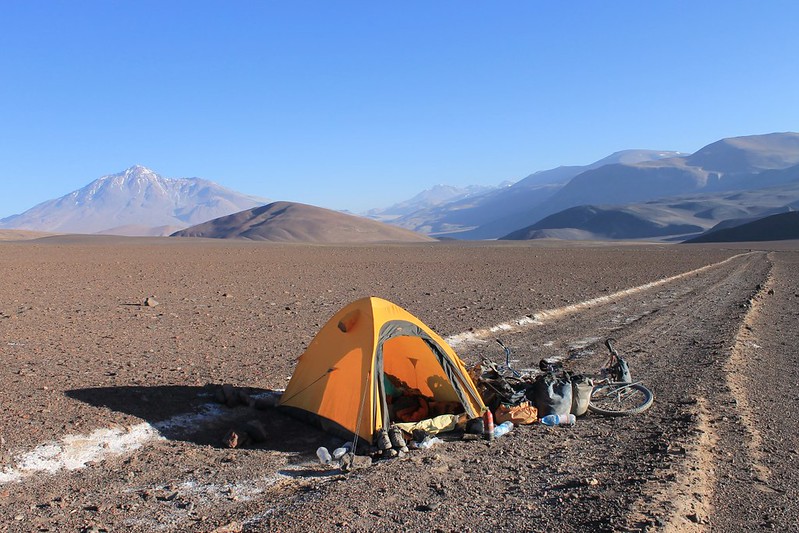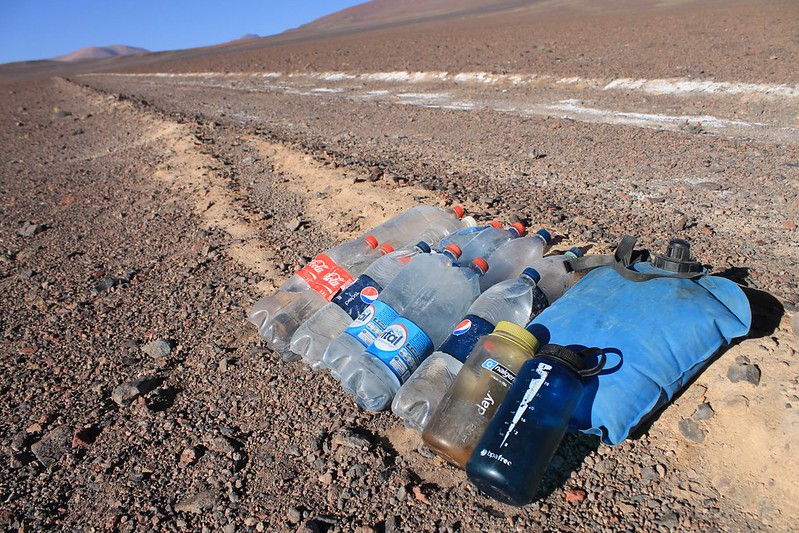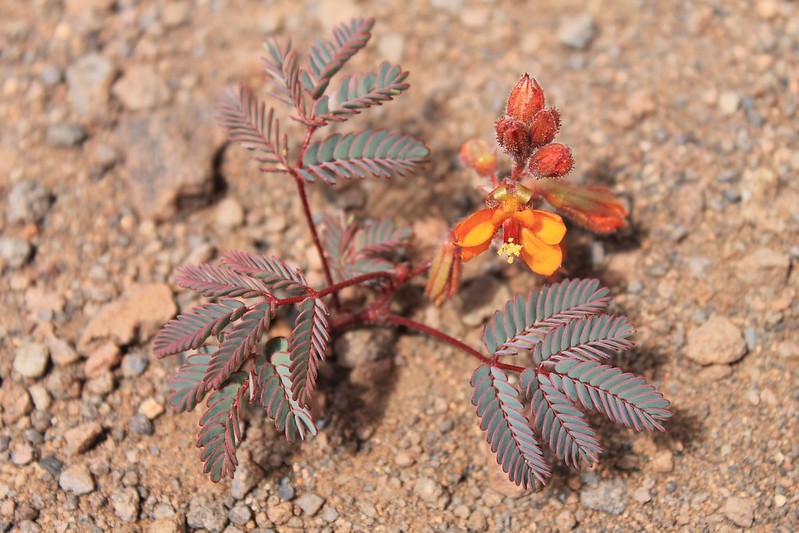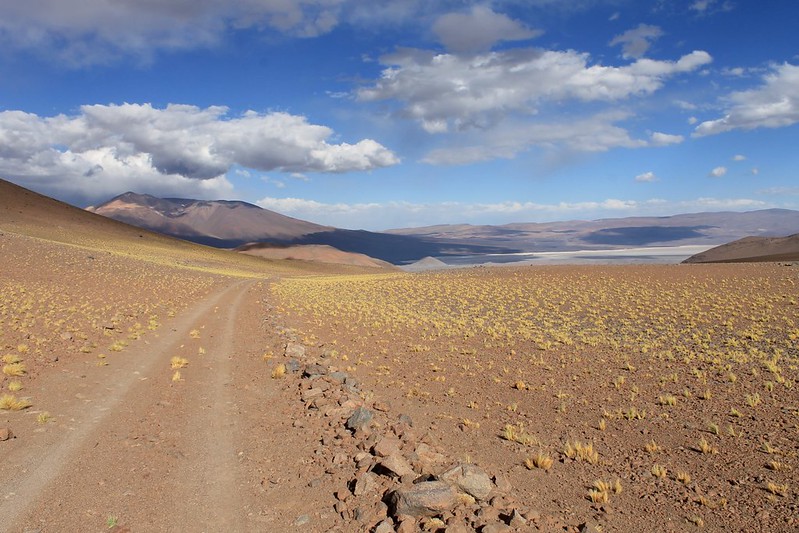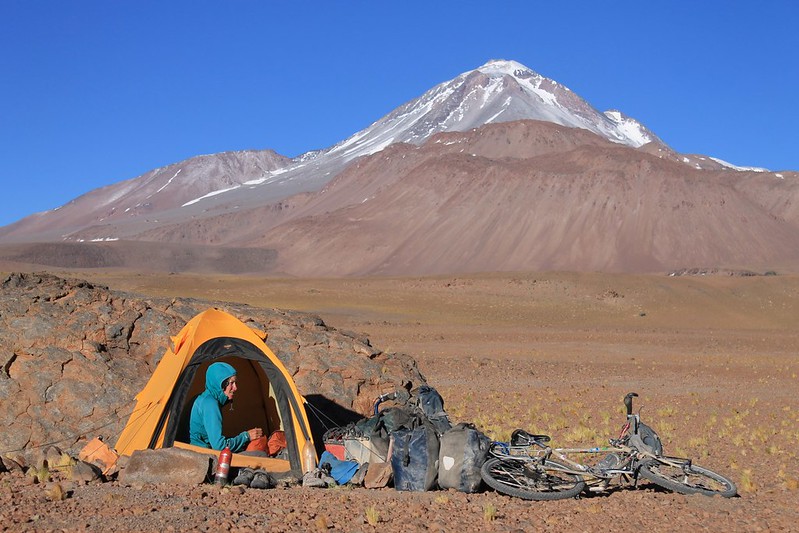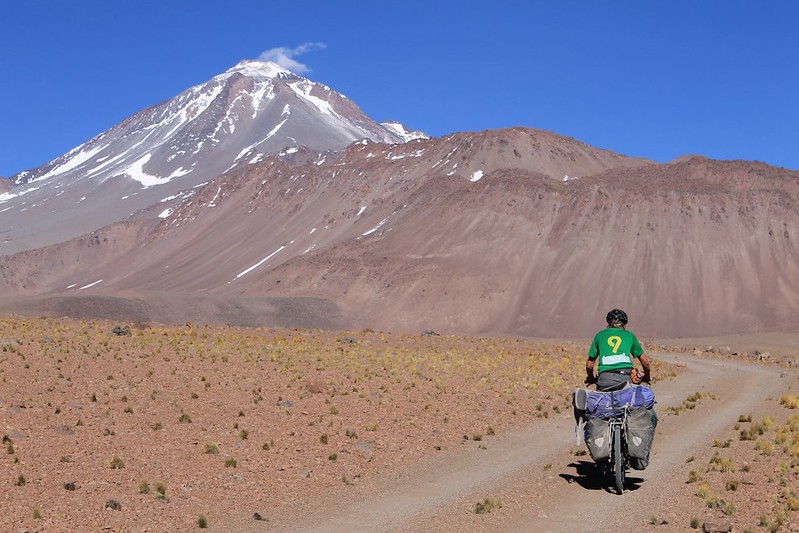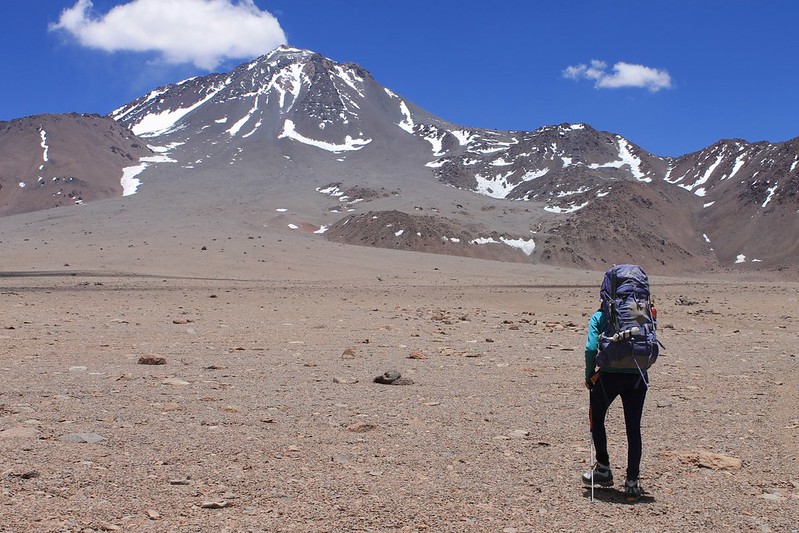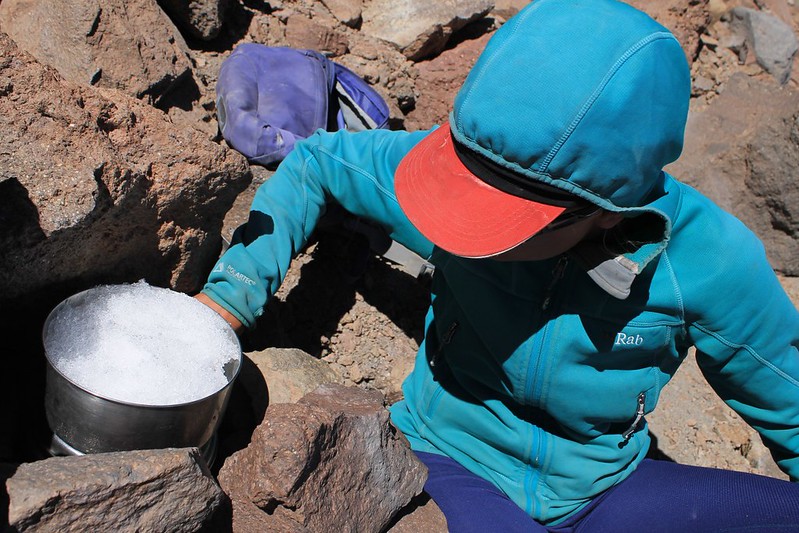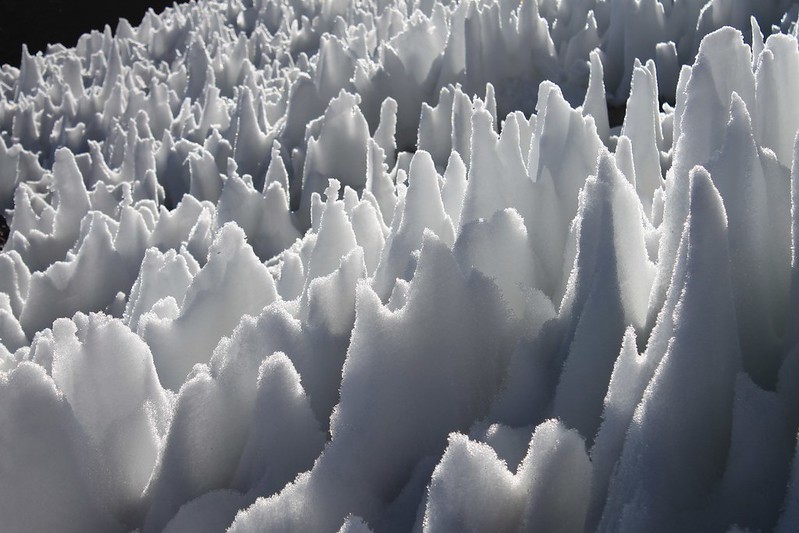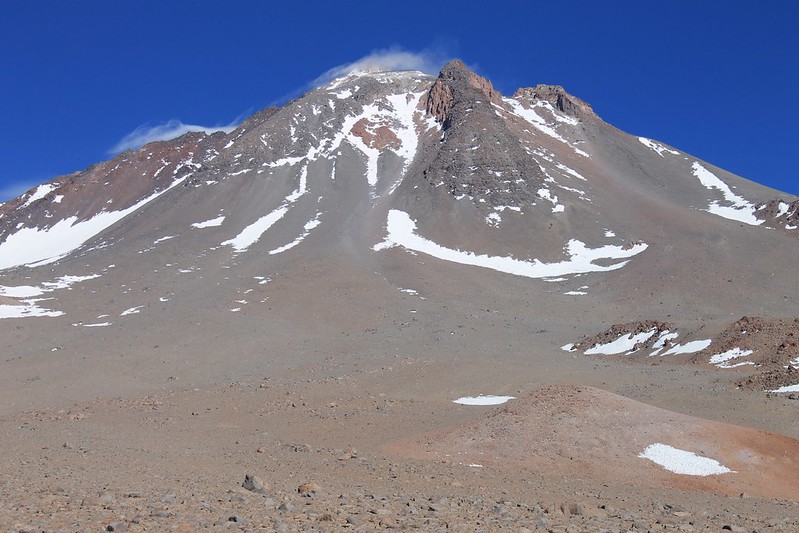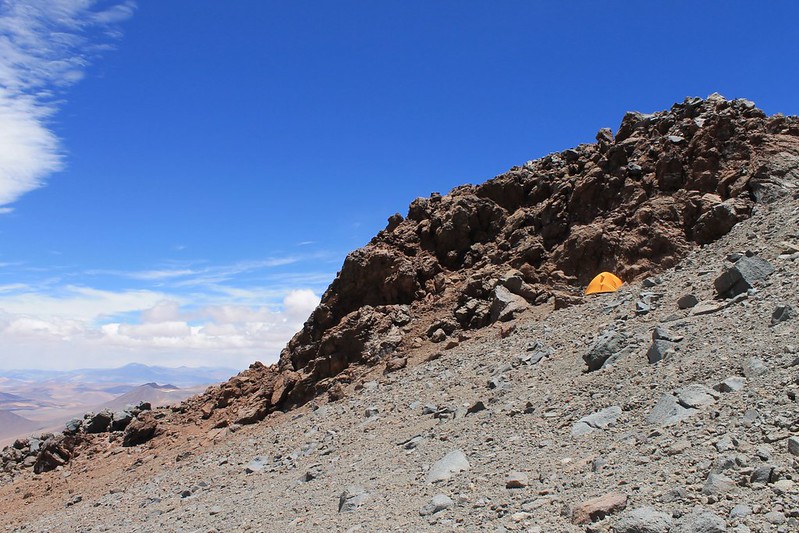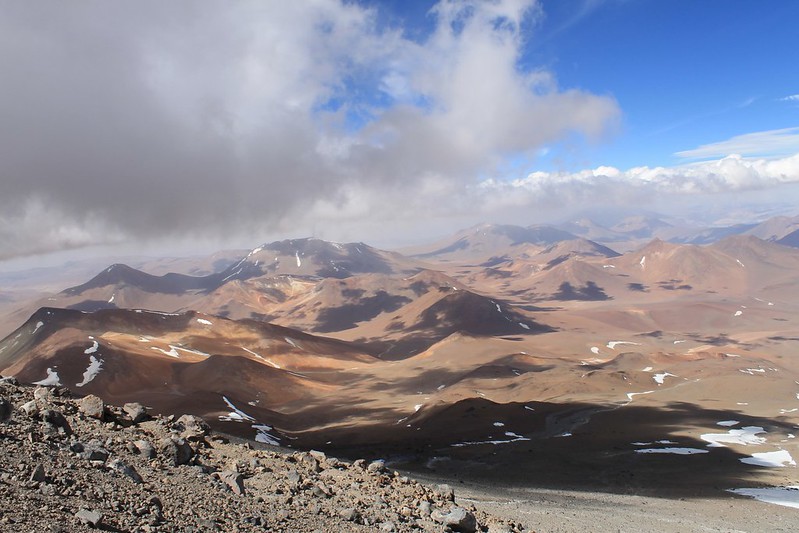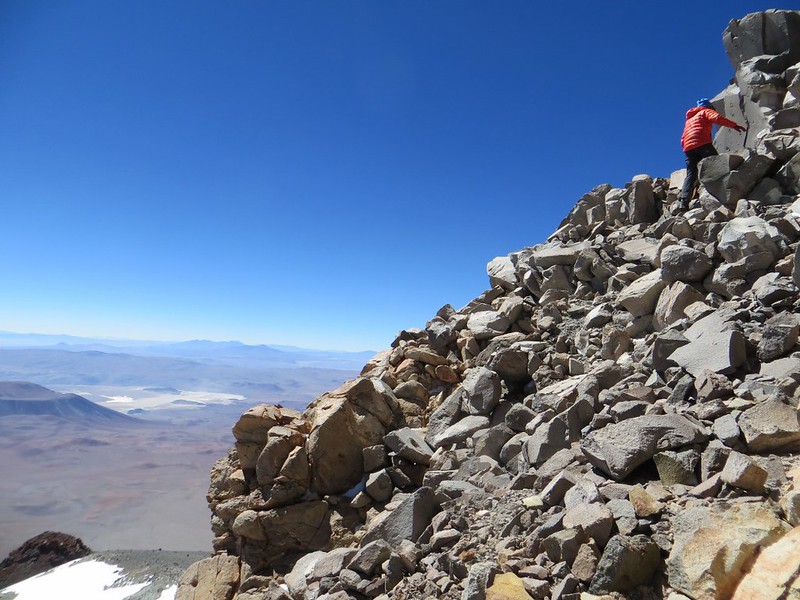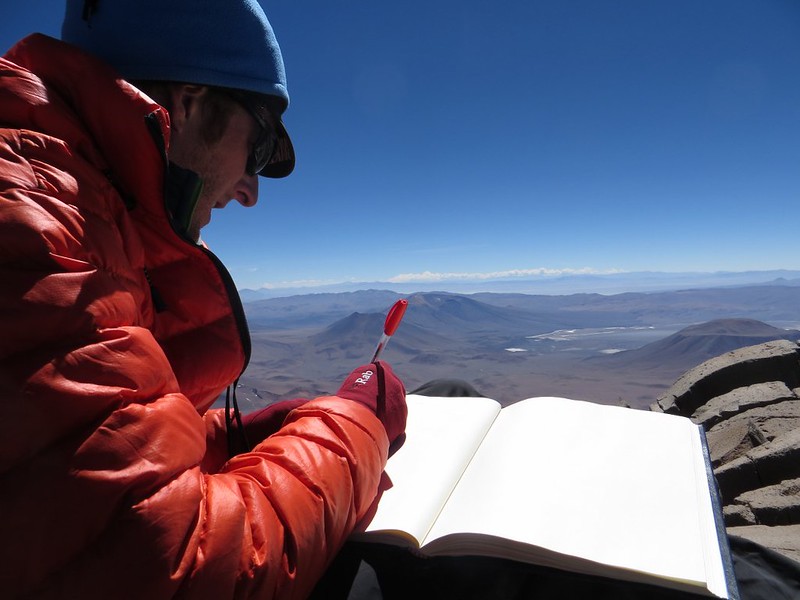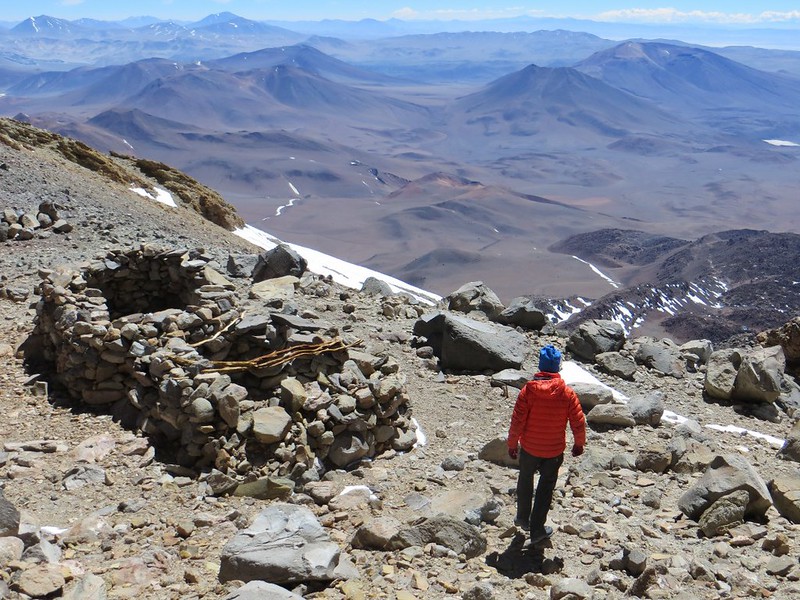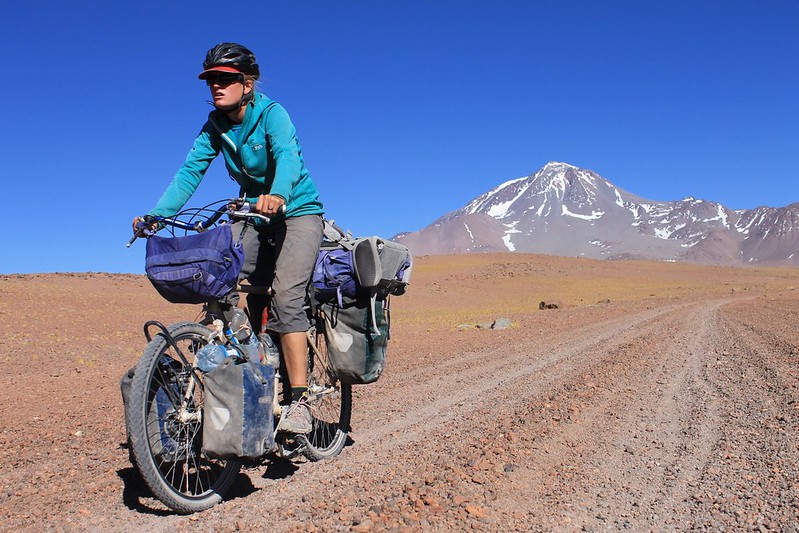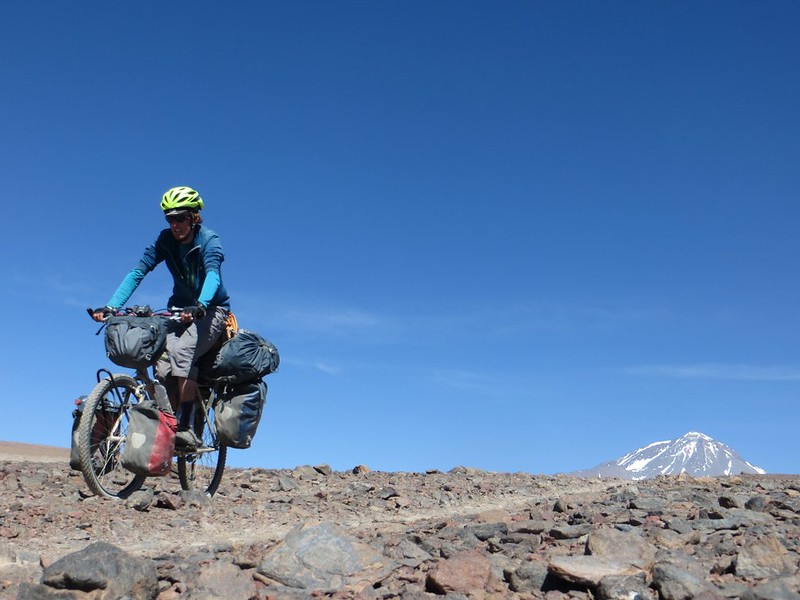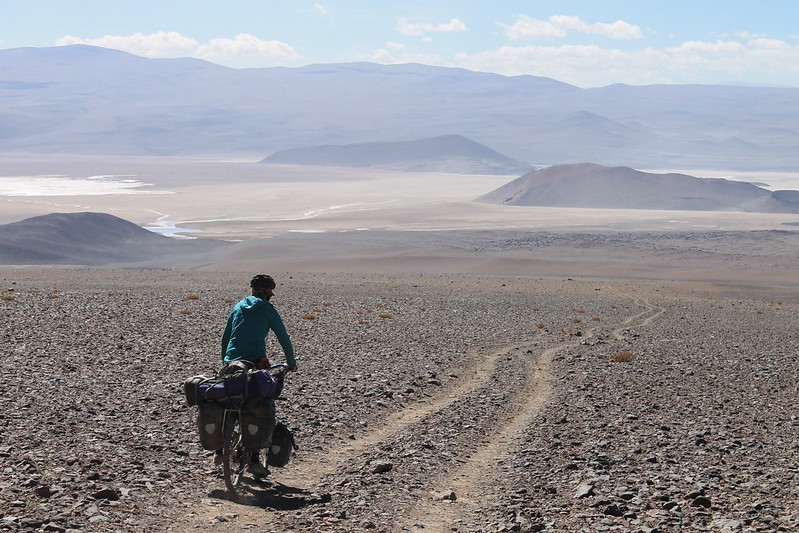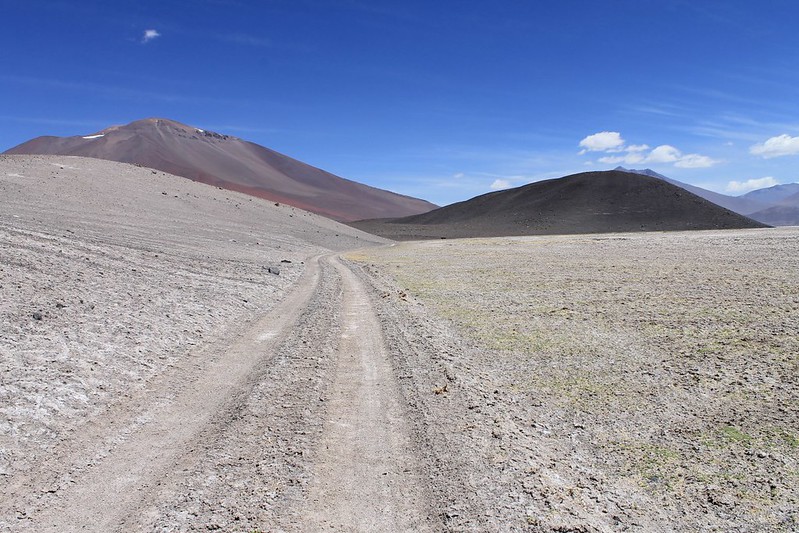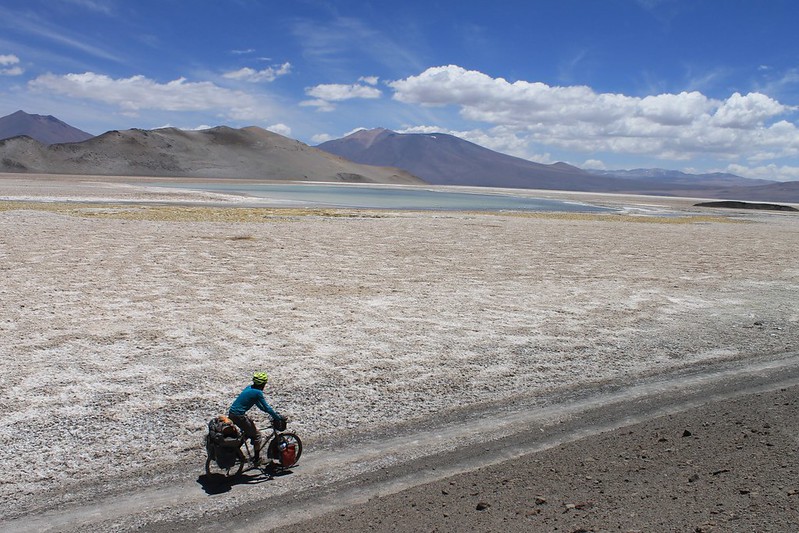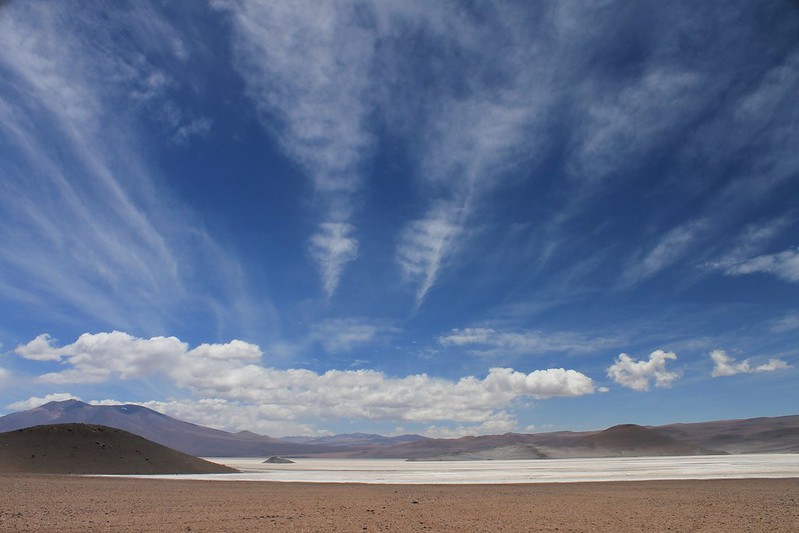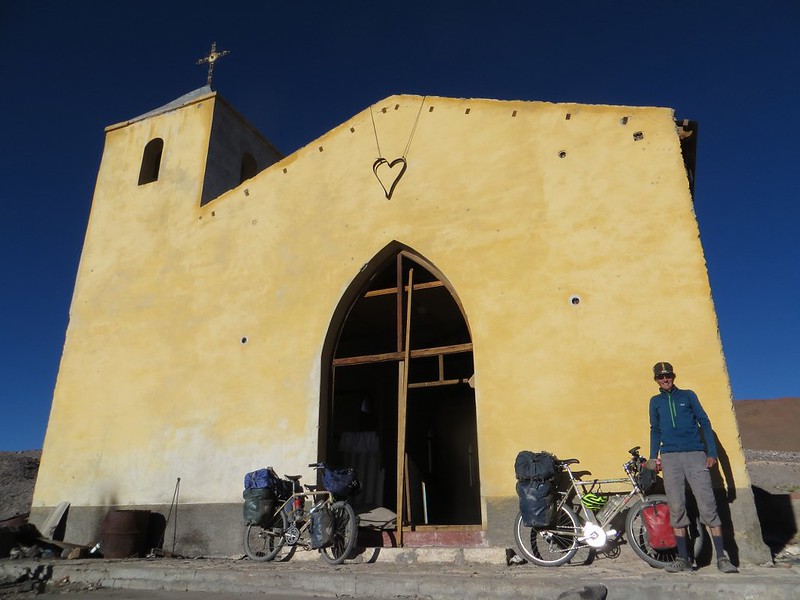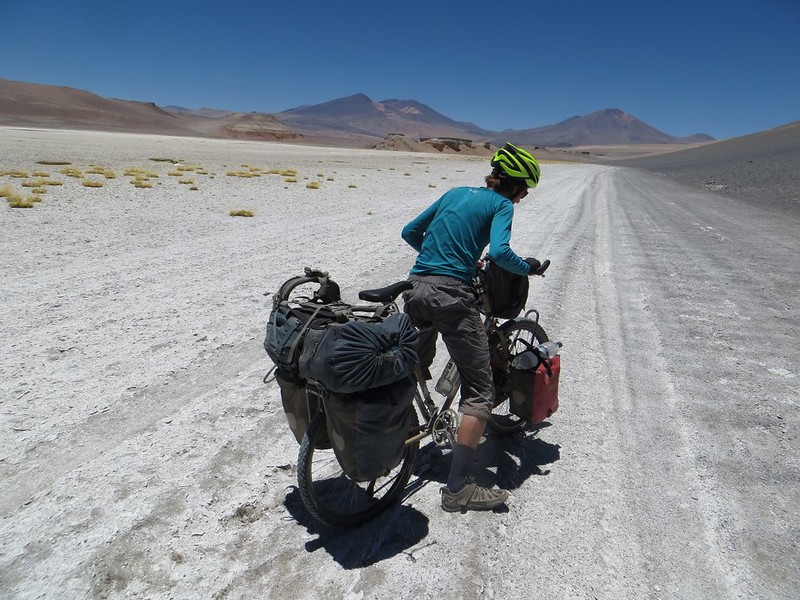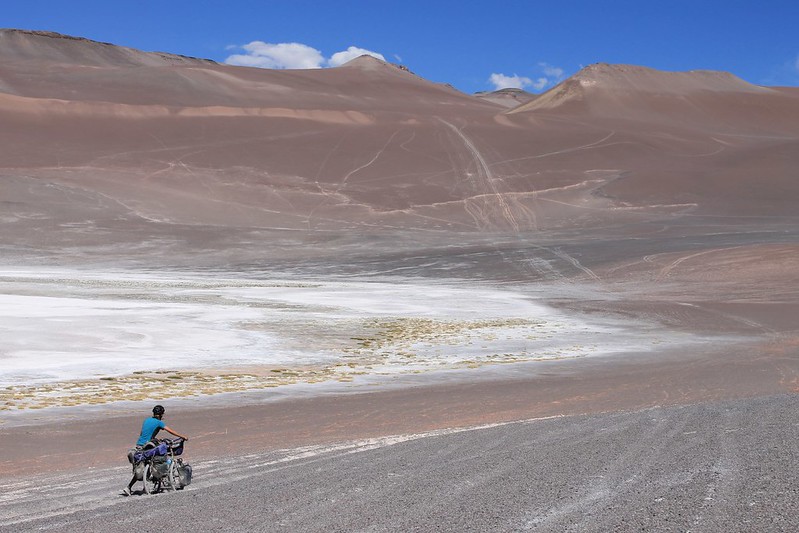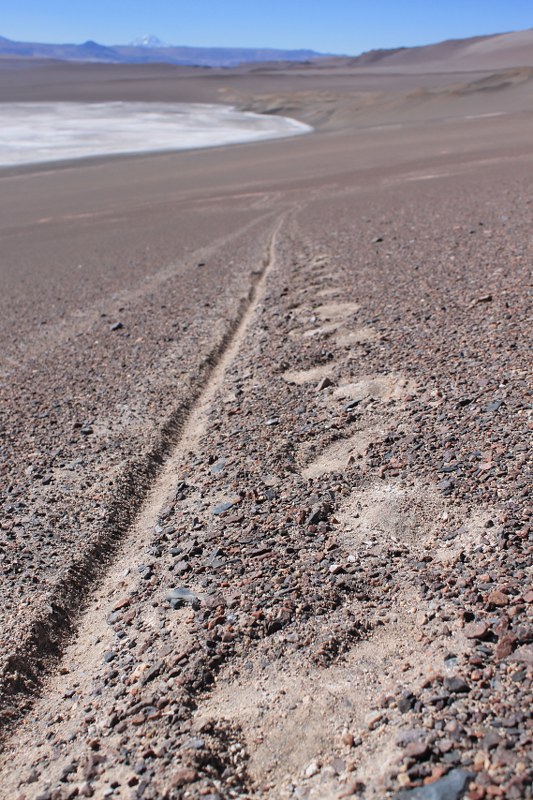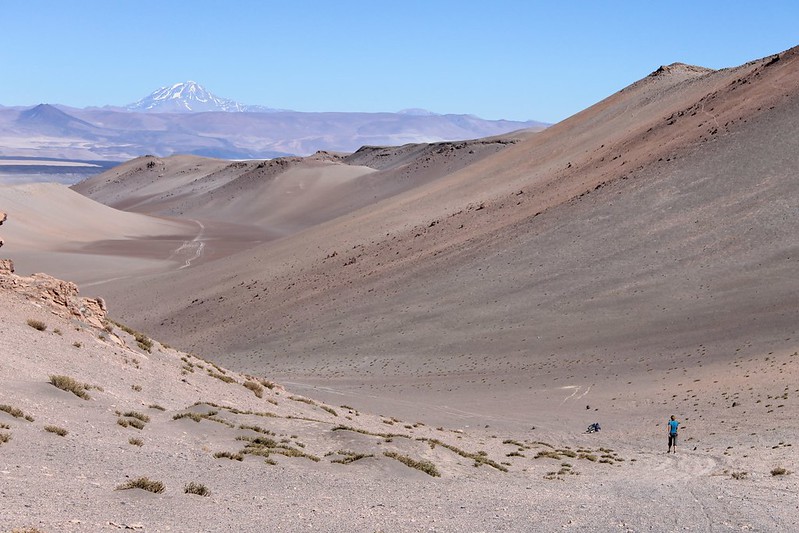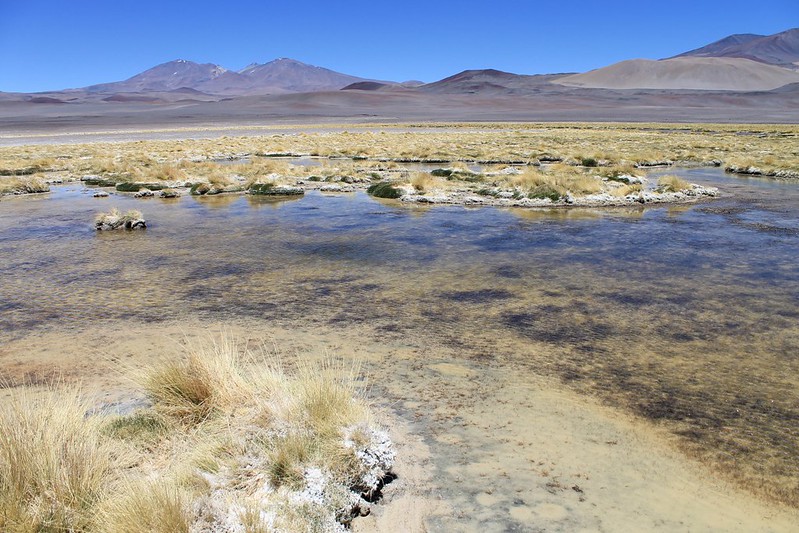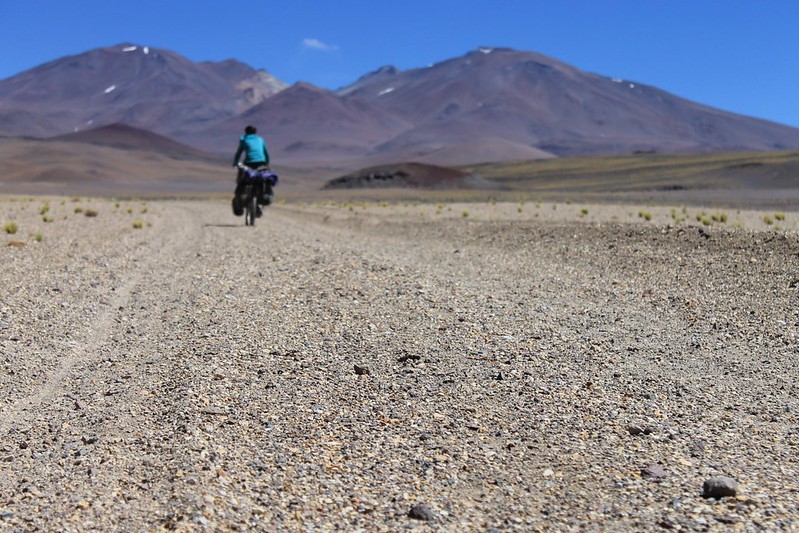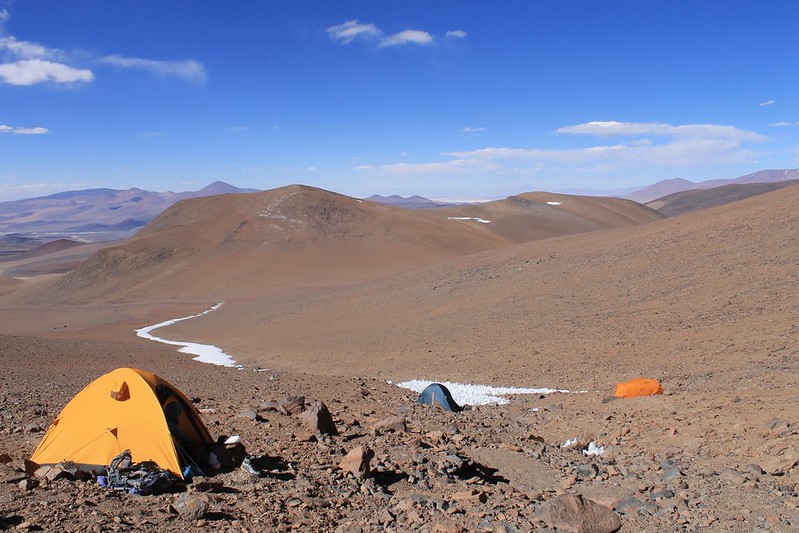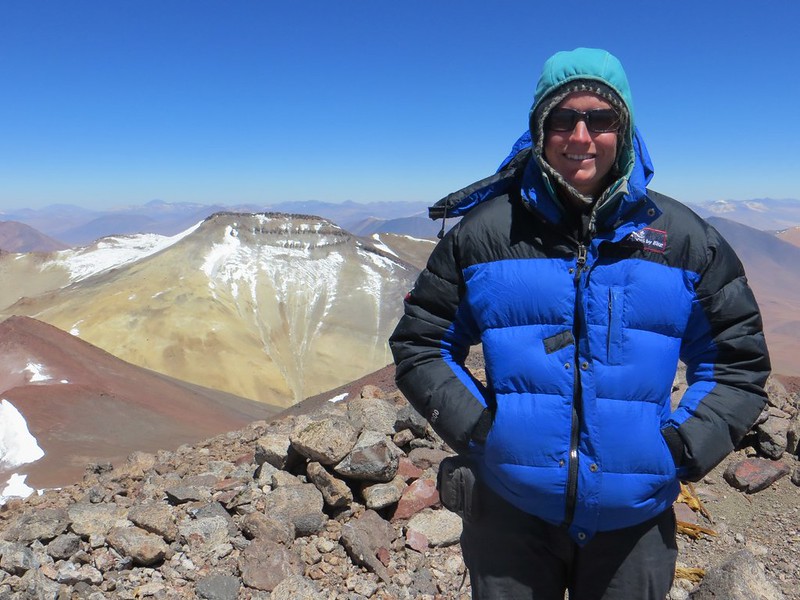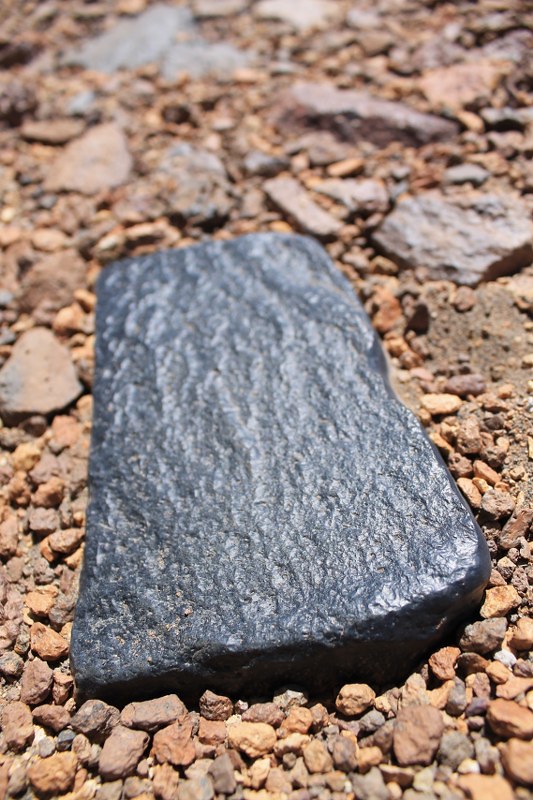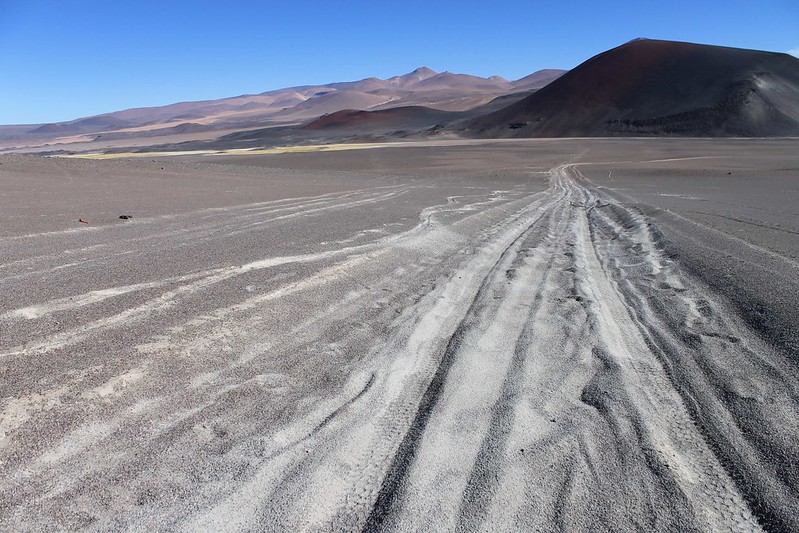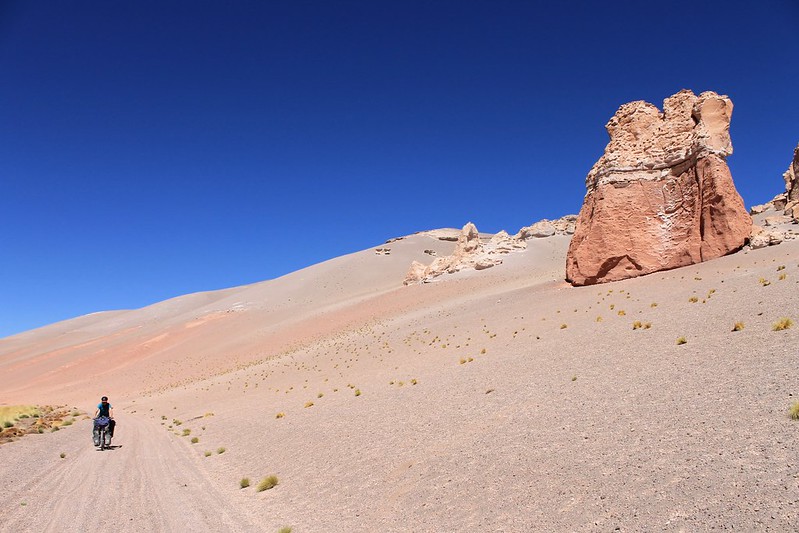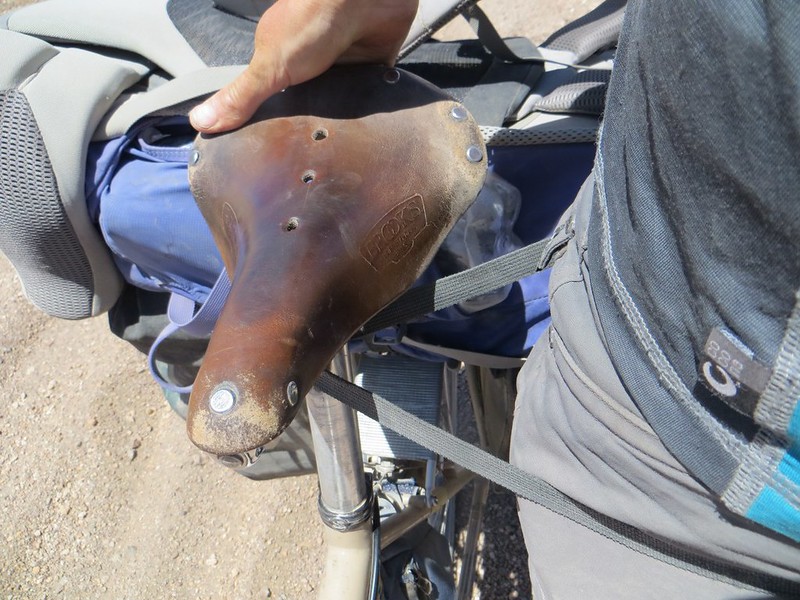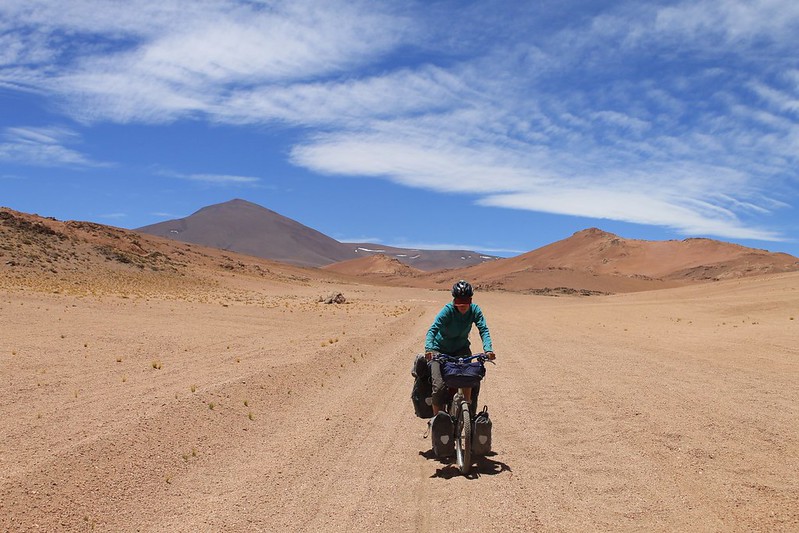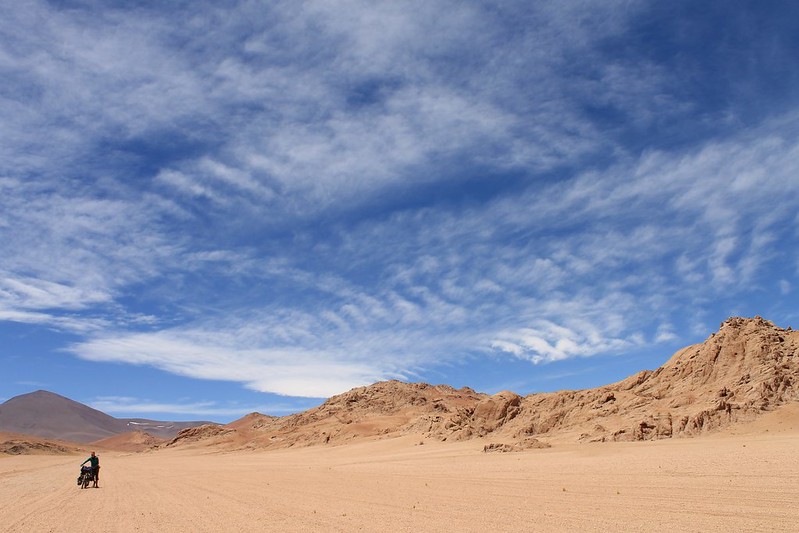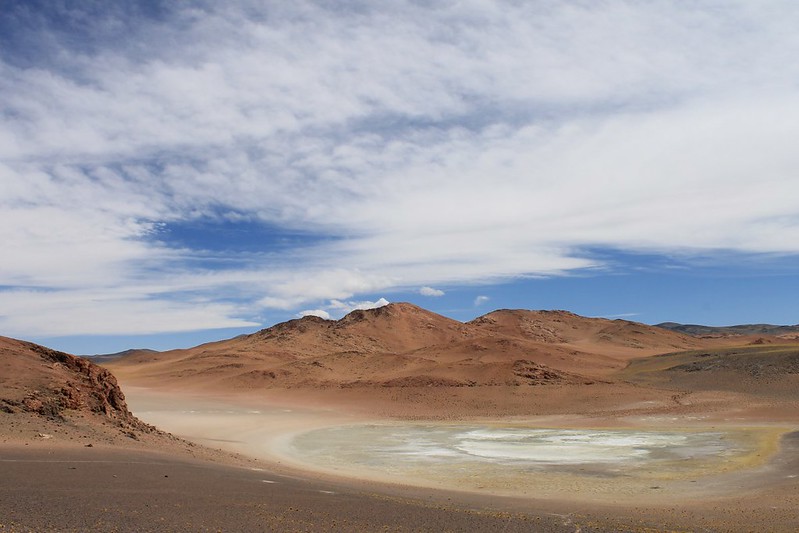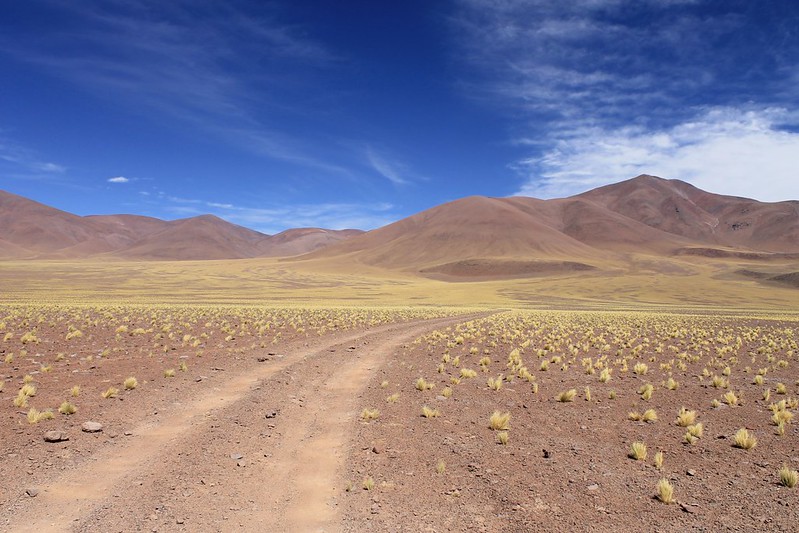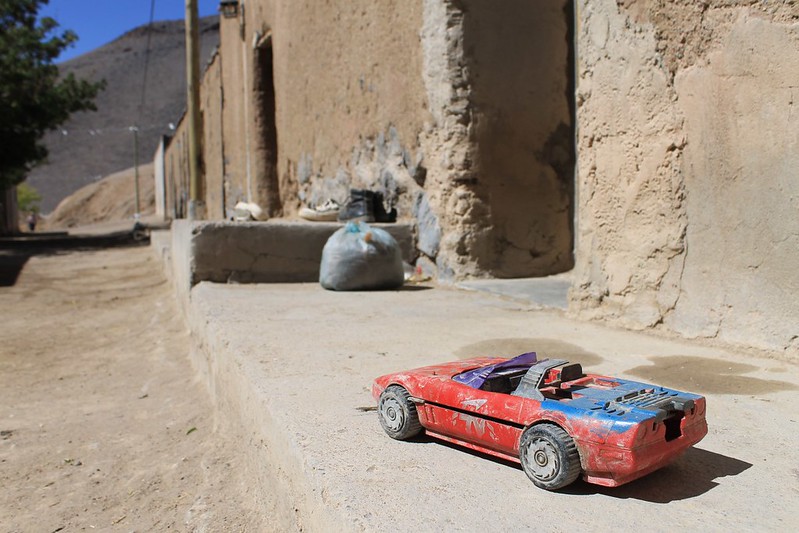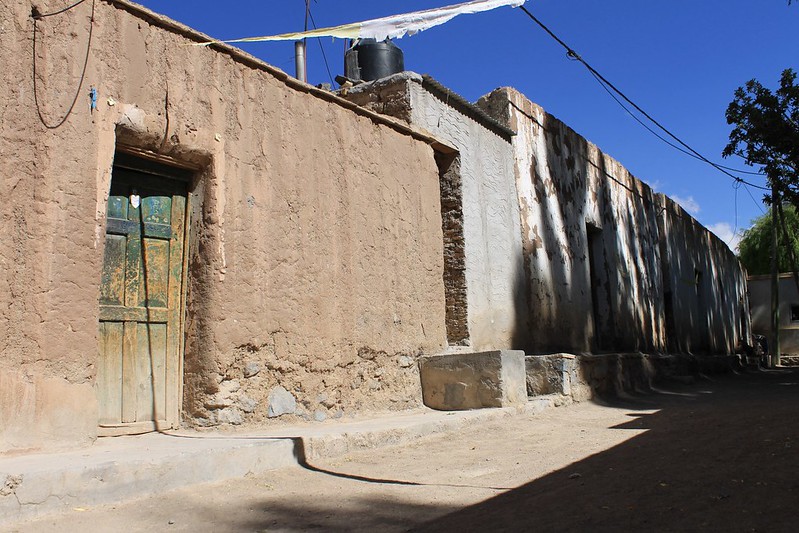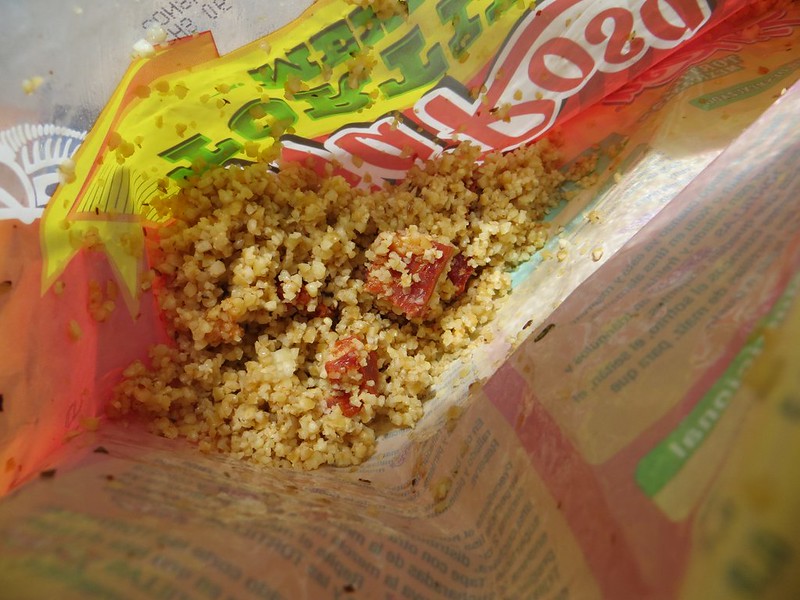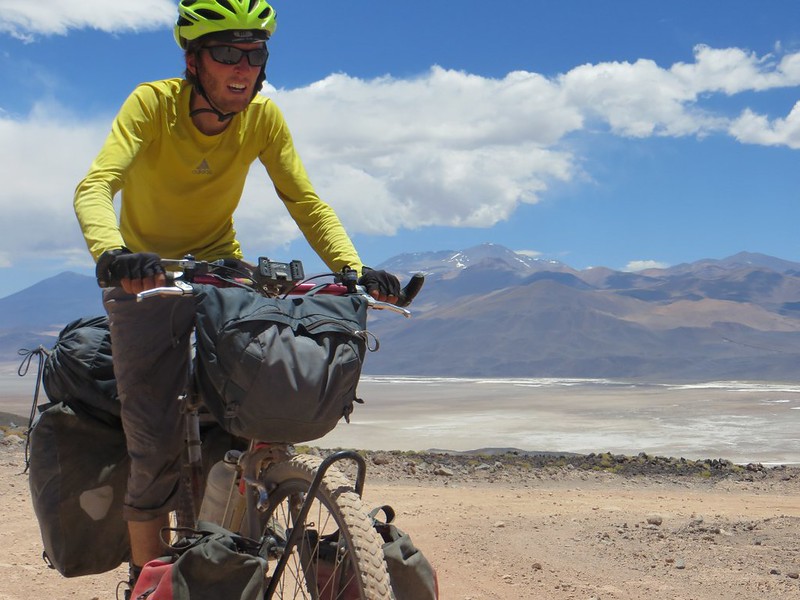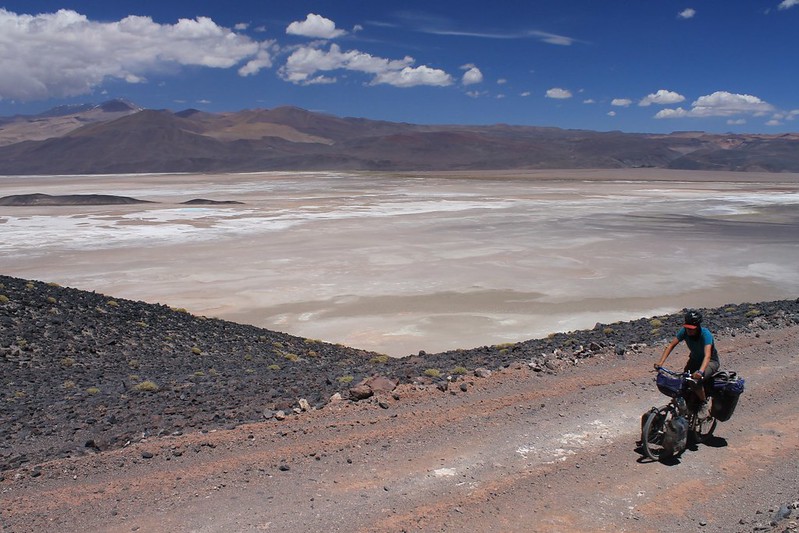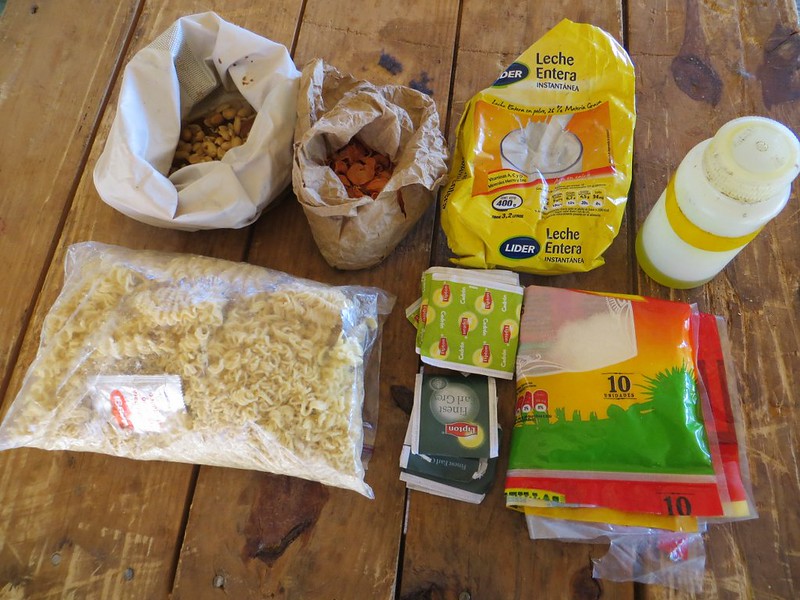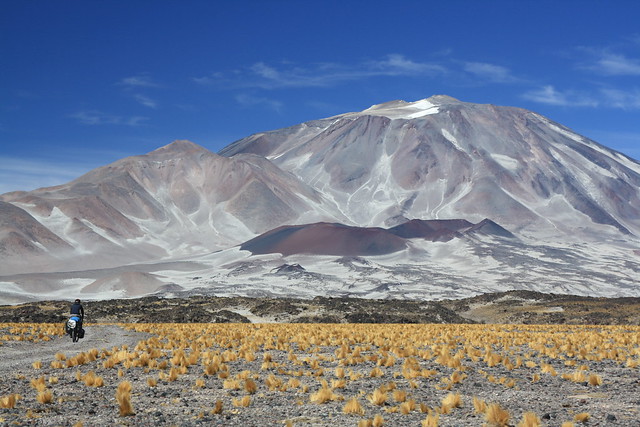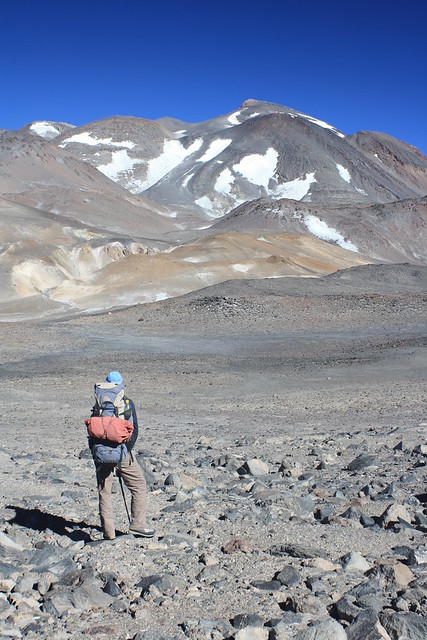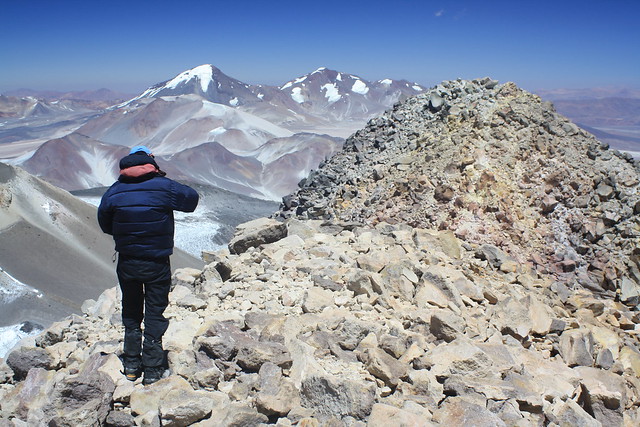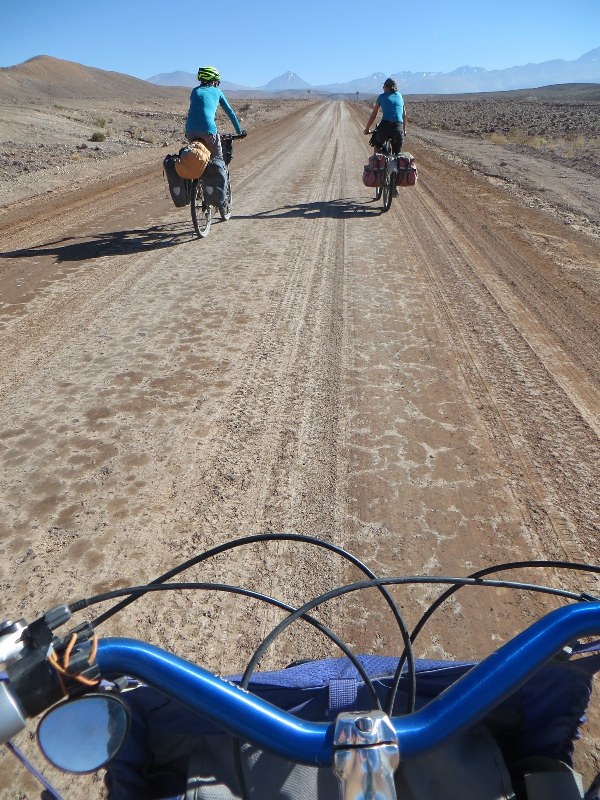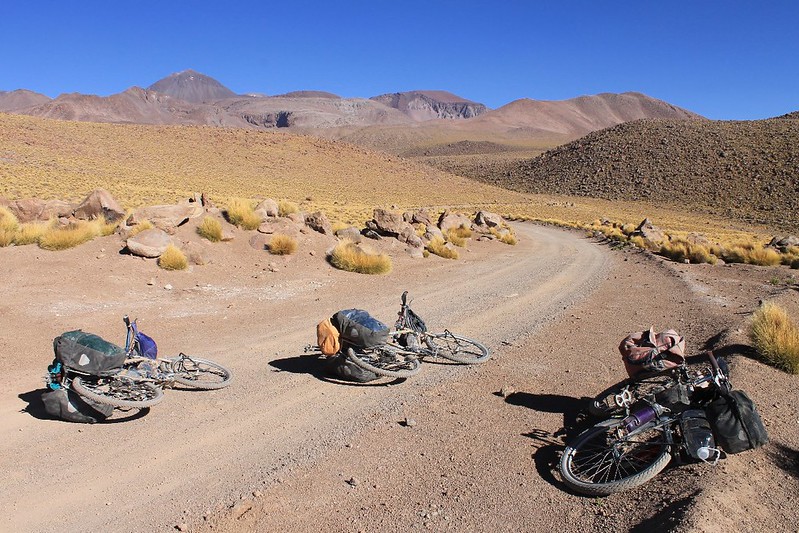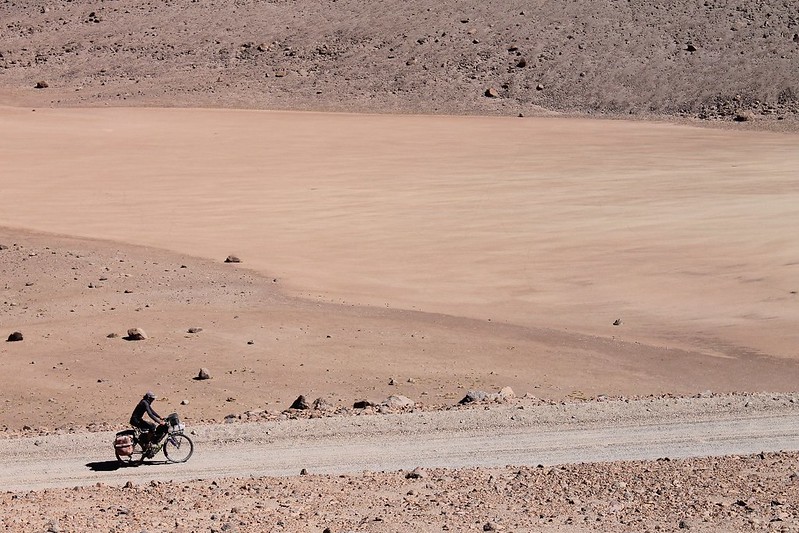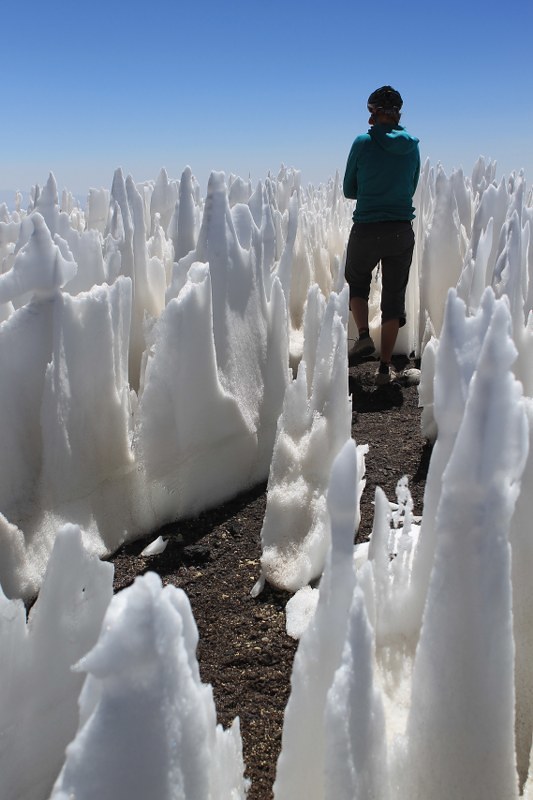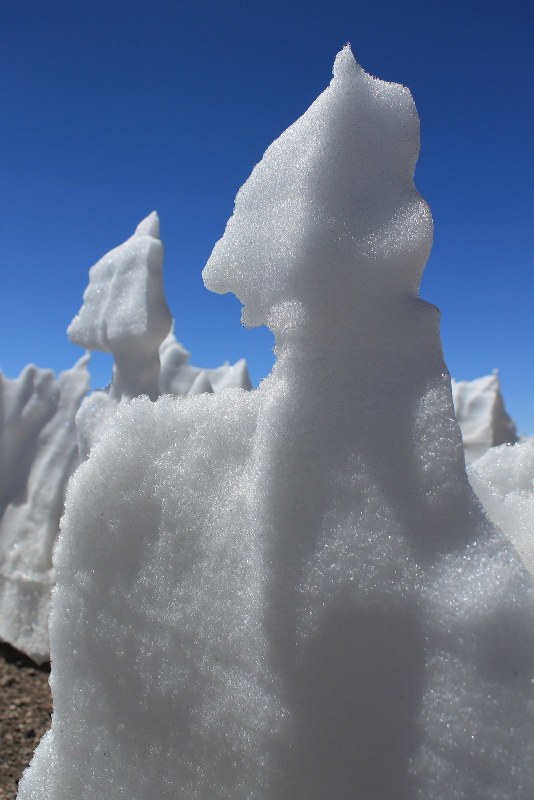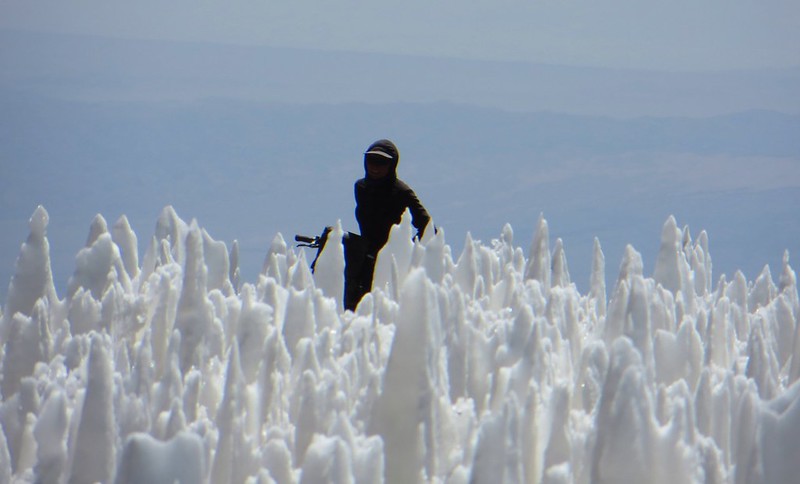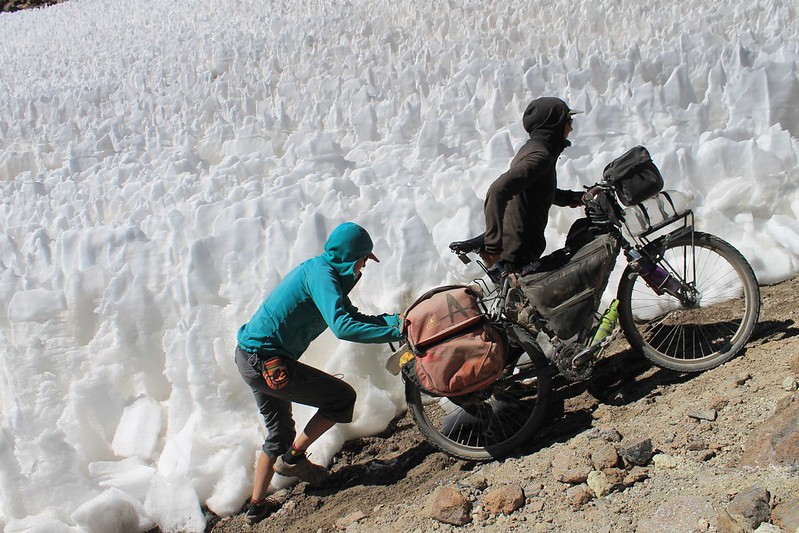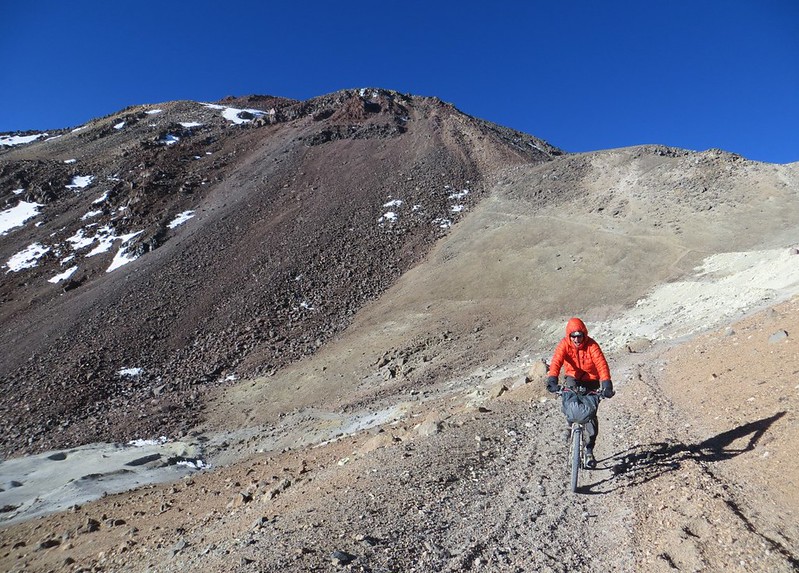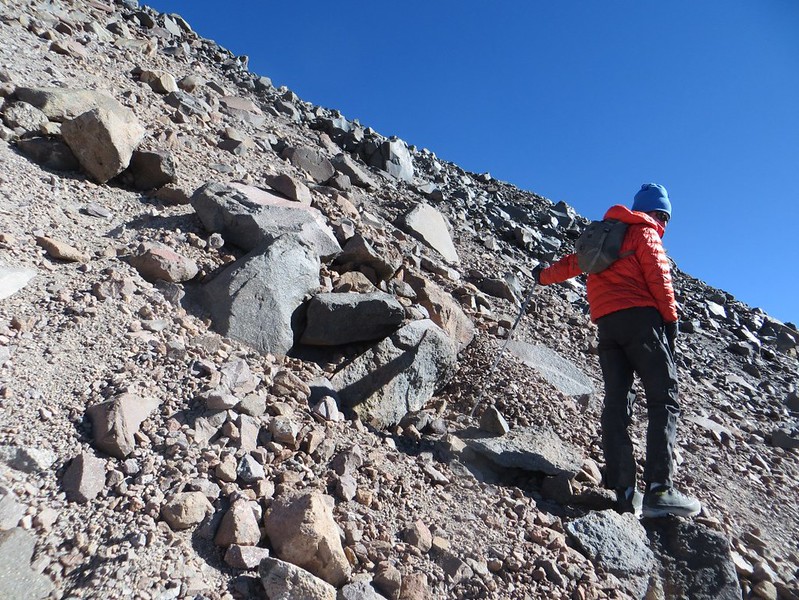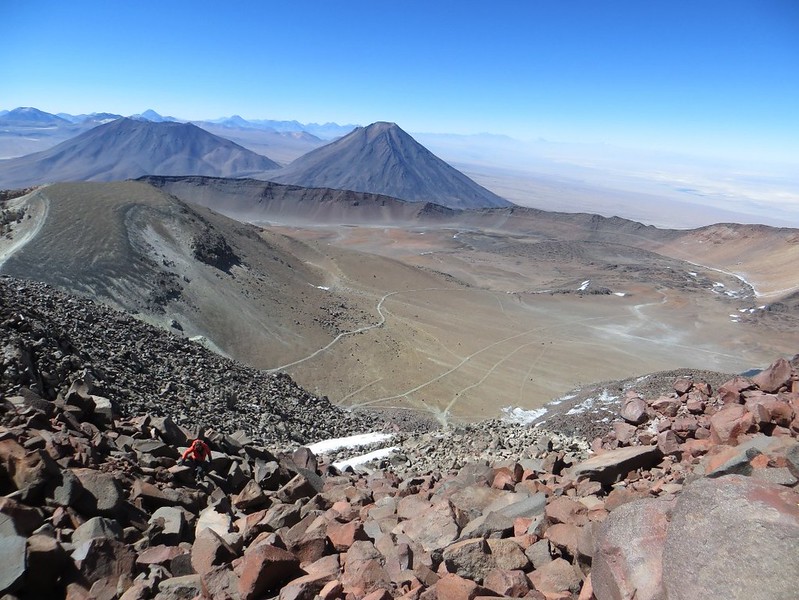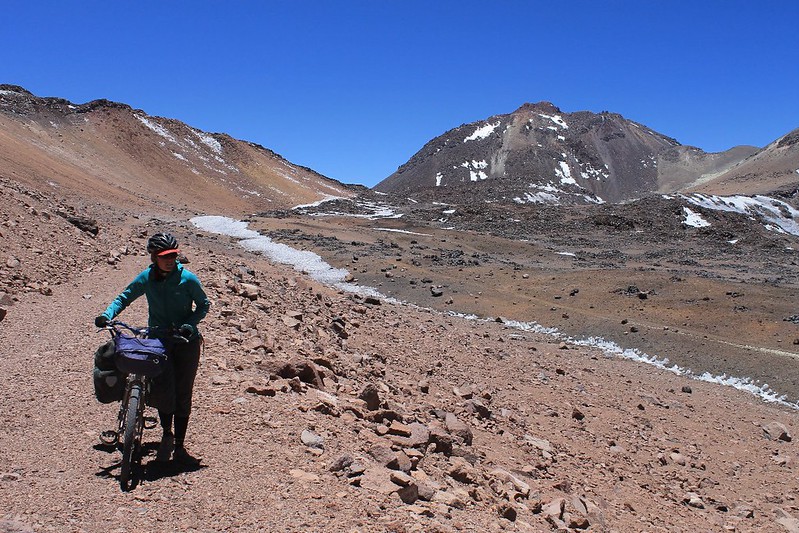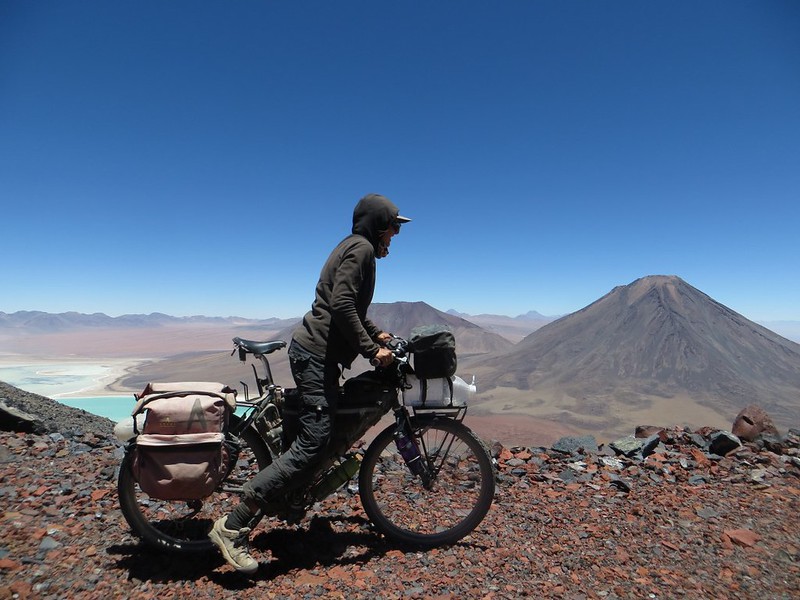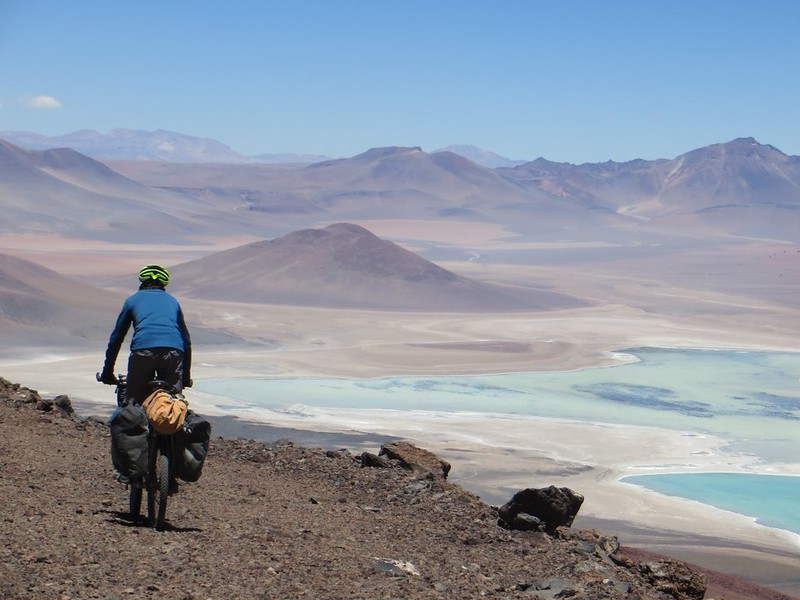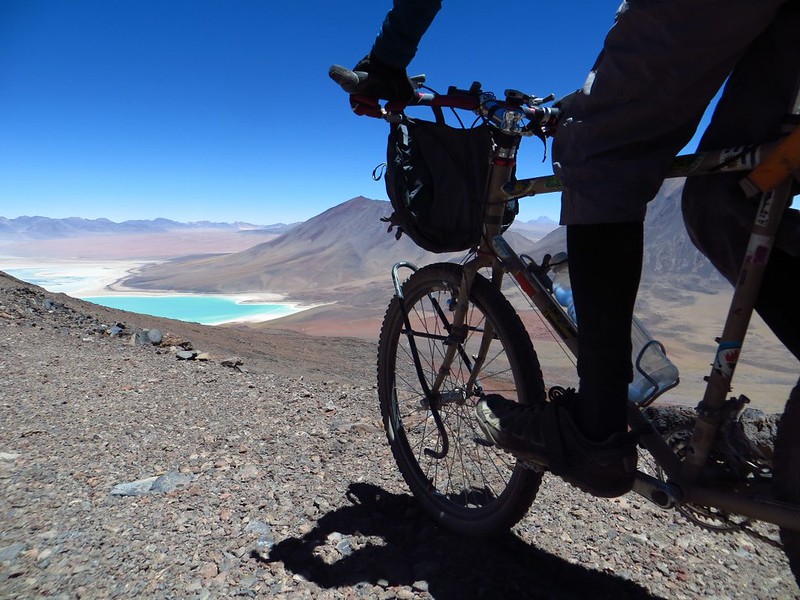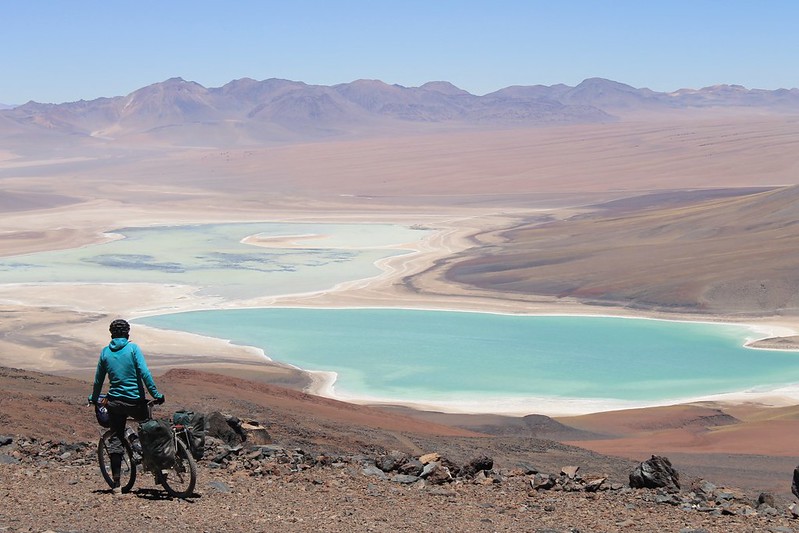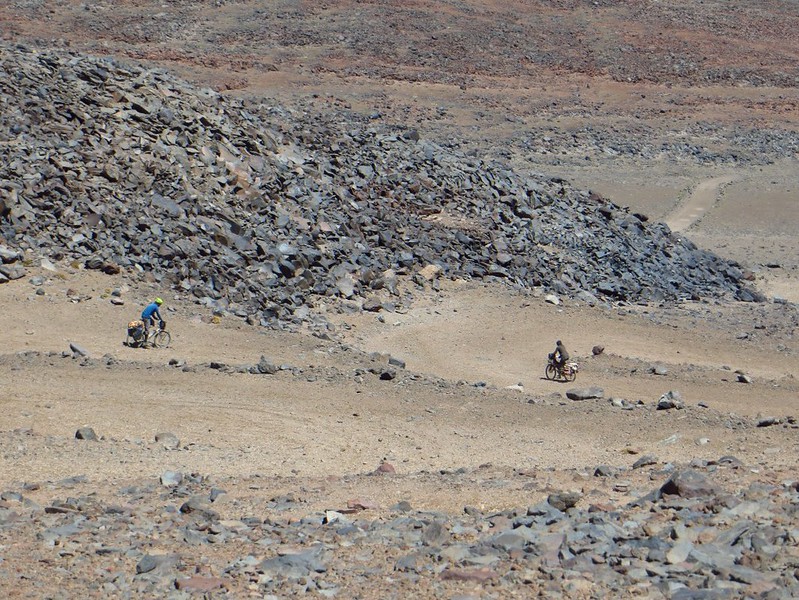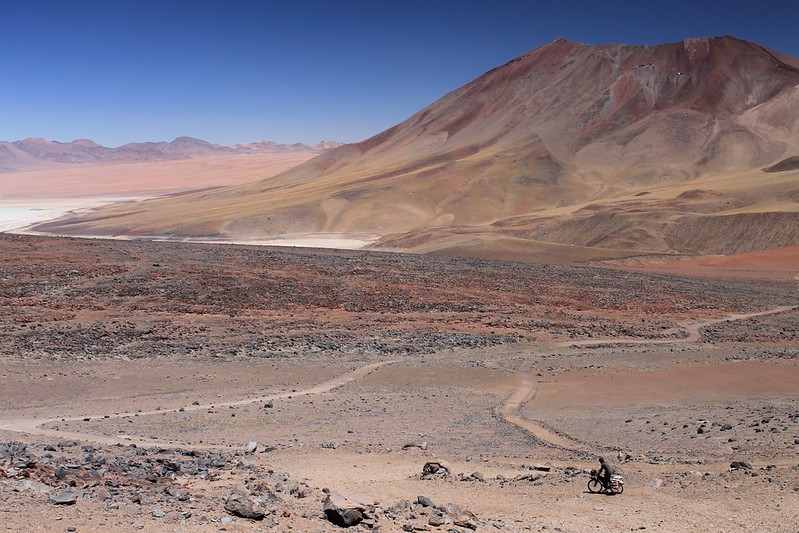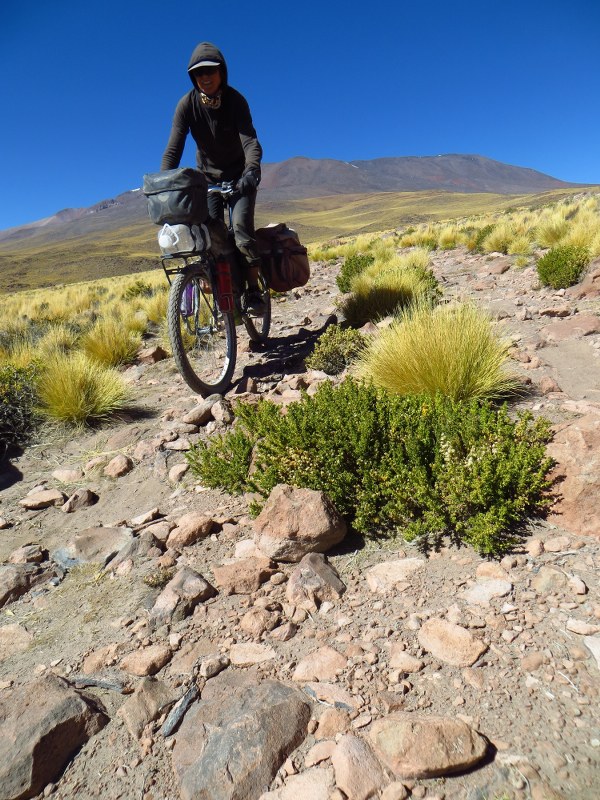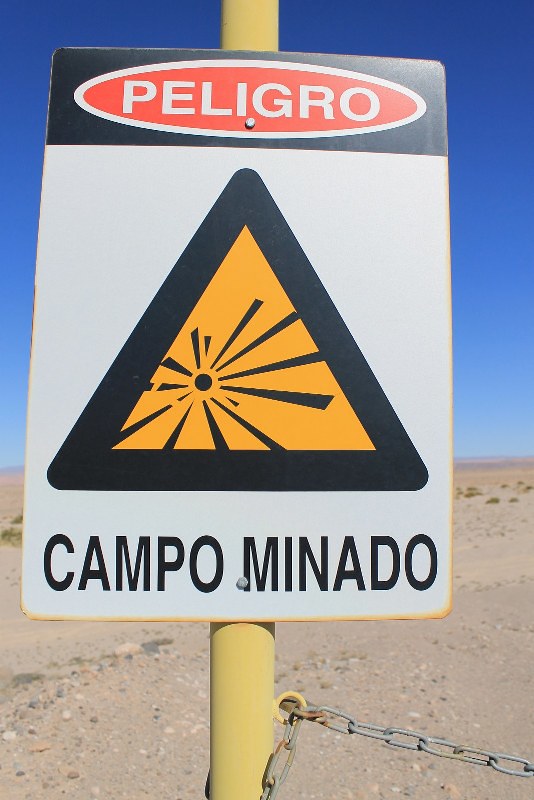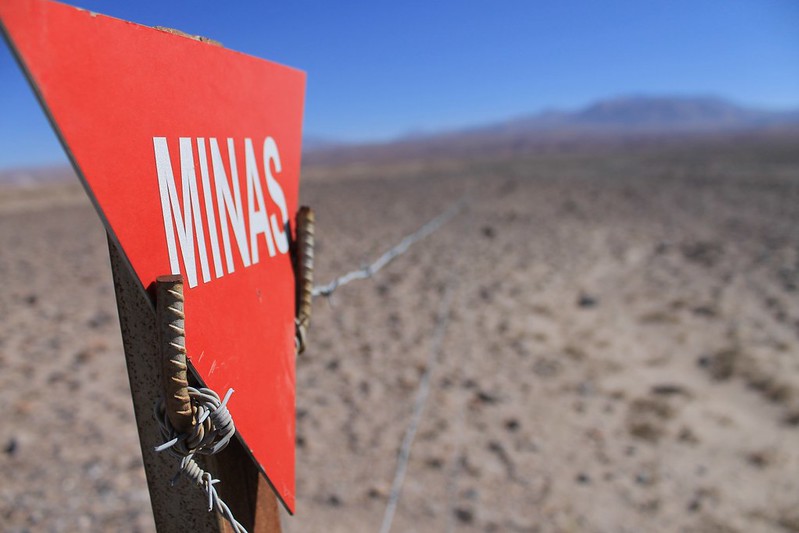In December 1936 a group of four Poles, along with their guide, four muleteers, 23 mules and two horses set out for the heart of the Puna. Rumour had it there were some high peaks in the area, and they were there to climb them. As well as looking for adventure, they were carrying out scientific research and some mapping and carried 400kg of equipment, which made for slow, steady progress. It took eight days to walk to their base camp near Los Patos at 4300m.
Over the course of the next two months they made first ascents of Patos, Pissis, Nacimiento, Ojos del Salado, and the next objective on our Puna 9 trip: Tres Cruces. As we made our way to the peaks, we wondered what would they make of the majority of today’s Andinistas driving to 5800m on Ojos, or the 4×4 we encountered at Tres Cruces base camp, situated at a lofty 5200m? The Poles must have gone weeks without hearing from family or friends – these days it’s possible to receive SMS weather reports on satellite phones from loved ones back home.
One thing that probably hasn’t changed is the amount of wine and good food that’s consumed in the refugios/camps. (We’ve read ‘The Ascent of Rum Doodle’, so know all mountaineers in the old days ate well and drank a bottle of vino tinto every night.) Being able to drive up to the mountain bases in a few hours from the large town of Copiapo means groups these days quite rightly bring huge food stores with them.
This section of our Puna trip differed greatly from the previous ones. For a start, the roads had some traffic and we even bumped into a few people on the peaks. The cycling was easy, on the route over Paso San Francisco, and reaching the base of Tres Cruces and El Muerto didn’t require too much more effort. With plenty of snow around, climbing the peaks threw up a bit more of a challenge than the previous volcanoes so we were happy to summit first Tres Cruces Central (6640m), then Sur (6750m) and El Muerto (6510m), in a five day window when the weather held good.
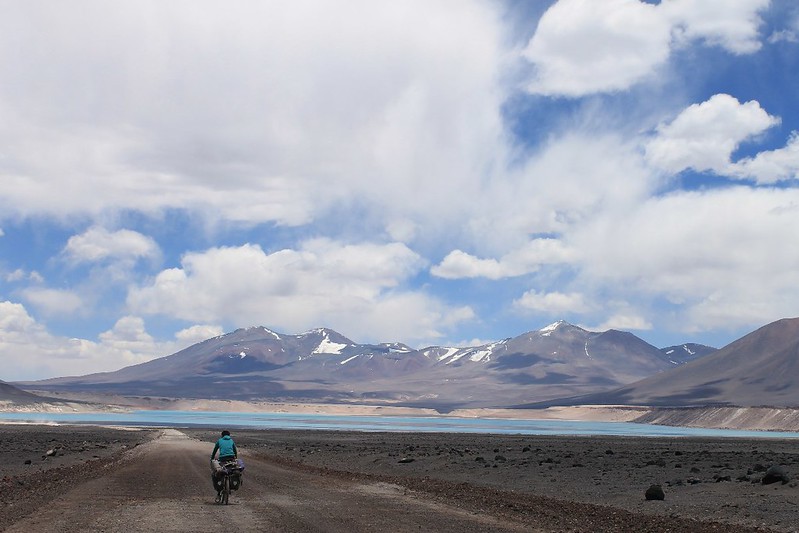
After a lazy week in Fiambala we’ve successfully completed our To Do list (which, at the beginning of the week read ‘Fatten up’). Neil is particularly delighted with his unprecedented weight gain: 7kg in 7 days. We didn’t sleep too well though – possibly something to do with the 1.5l of Pepsi we each drank every day? Then Jonson gives us a ride back up to our bikes at Las Grutas, and we continue our trip. Here we are descending from Paso San Francisco to Laguna Verde. The road surface on the Chilean side is far better now than when we were in the area in 2011, despite the fact that the construction company which was working on the road went bust before they completed the work.
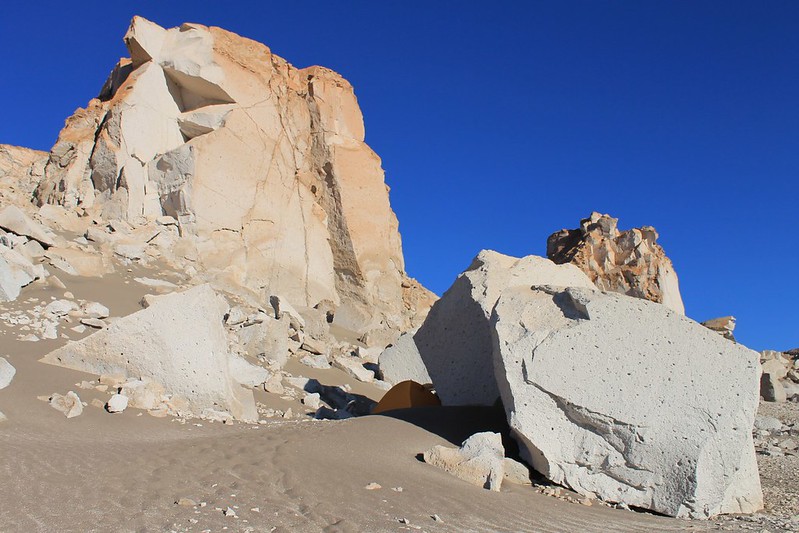
The first night sees us camping amongst the giant pumice stone, near the turn off to Ojos. The tent well hidden from the road.
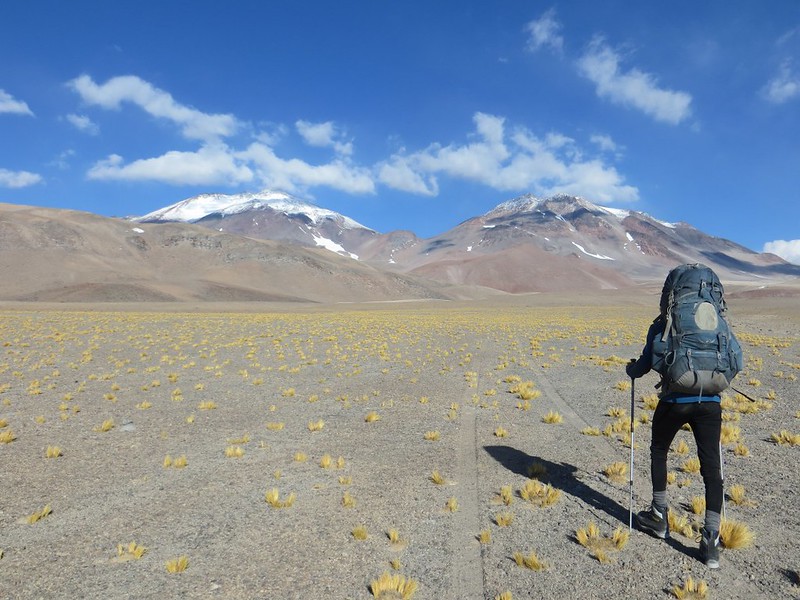
The new paving means that we’re at the turnoff to Tres Cruces by 11:00, so have time to hitch to the immigration post at Maricunga for our Chilean entry stamps, and back again, then wander to a Tres Cruces base camp at 4700m before nightfall.
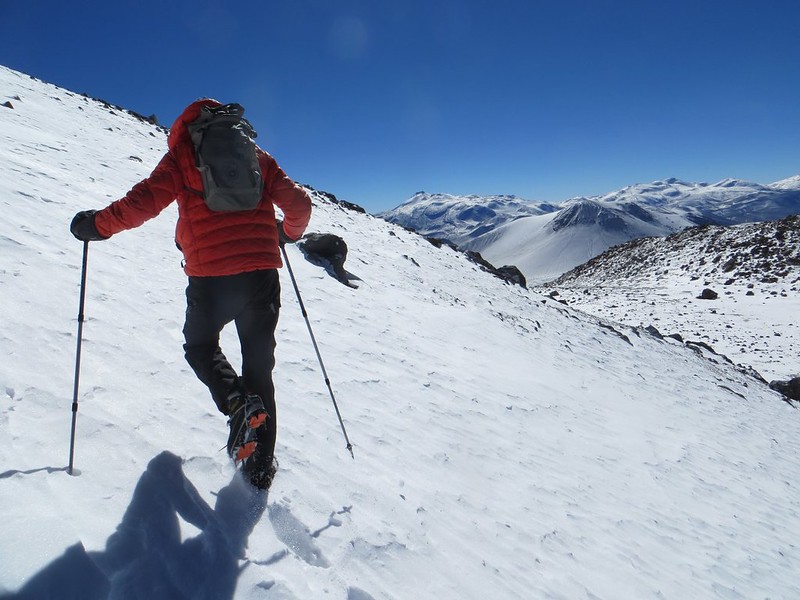
We spend a tiring day hauling big packs up from base camp to a great high camp on the col at 5930m between Sur and Central, and on arrival it begins to snow lightly. In the morning it’s breezy at camp, so we decide to change plans and head to the easier Central peak first. The wind dies and we enjoy a lovely climb.

The summit crater ridge is a few hundred metres long and very flat, so we never work out which part is the real top – the summit book is buried somewhere under the snow. We walk the full length of the ridge a couple of times to make sure we’ve been to the highest point…
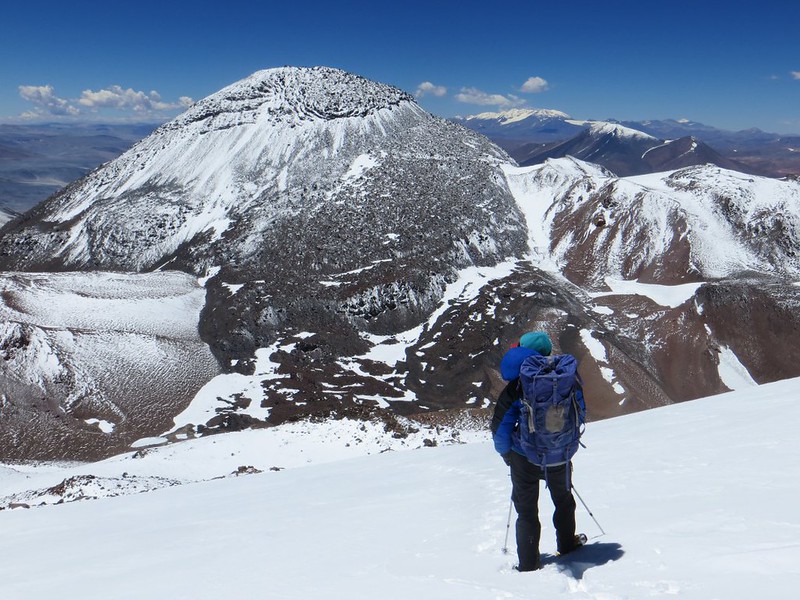
As we descend in perfect weather from the Central summit, we ponder the route we’ll take on Sur in the morning. Lots of ugly boulder fields between camp and the top.

We leave at 07:00, which is pretty early for us, and make steady progress for 2h30 up to the snowy col at 6440m. Here we’re not far from the summit in a straight line, but the going becomes trickier.

Crossing the boulder field takes 90 mins, despite the fact it’s only 100m of ascent, and 500m horizontally. We have to take care with all the fresh snow that we don’t fall into one of the large holes between the rocks, which are sometimes hidden by the fresh snow. Then we reach the rock band at 6600m.
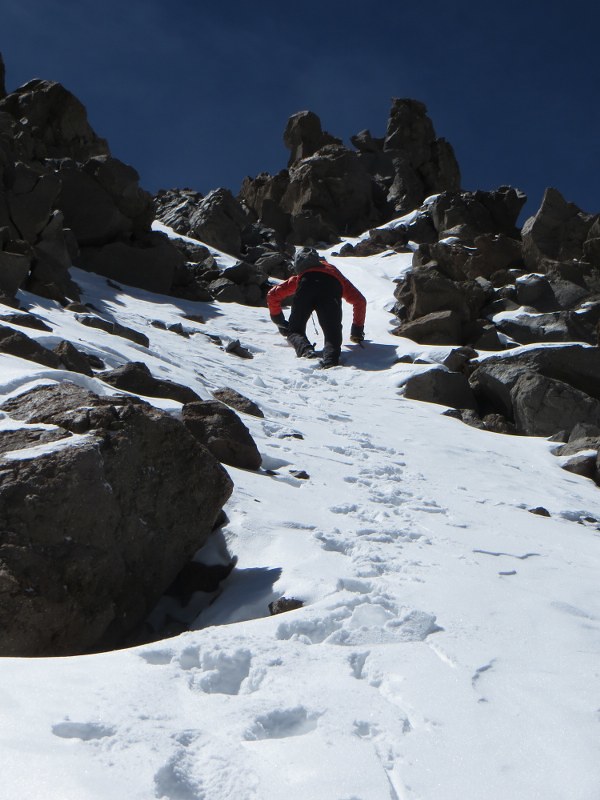
Usually this is the dodgiest part of the climb, and somewhere you have to take care due to the steep, loose terrain. Lots of rocks and small boulders just waiting to be dislodged and kicked down onto those below. But with snow this section is much easier that we are expecting, and we’ve soon worked our way up it.
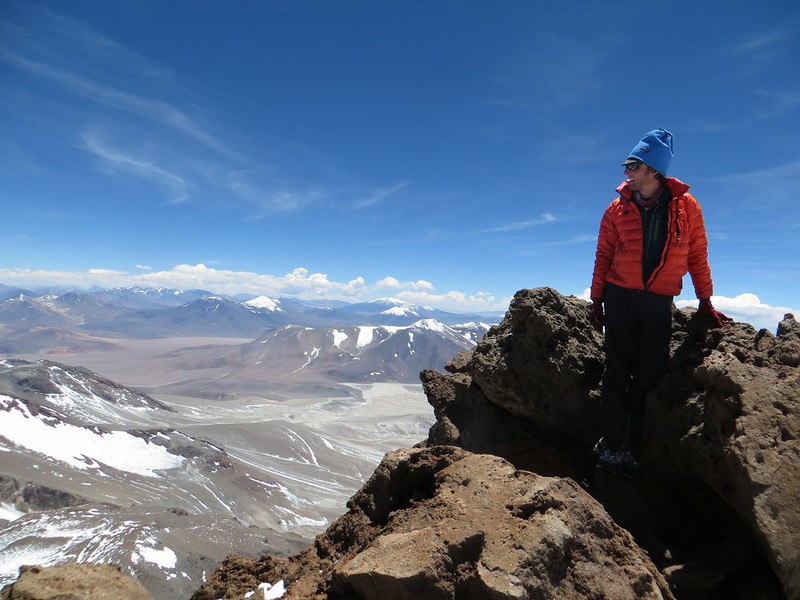
Then comes another boulder section which is slow going – the last 100m (vertical) takes an hour as we continue gingerly through the rocks. At 12:30 we’re on the summit. This is the bit we think might be the highest, though the summit book (which again we never found in the snow) and Leki pole marking the top are a couple of hundred metres away.
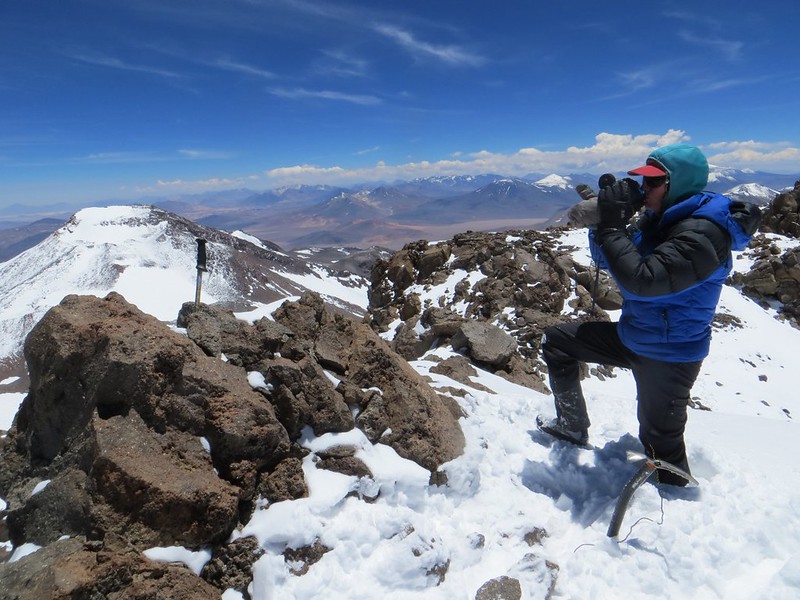
Here’s the Leki summit. We dug around a bit for the book before giving up. The flat Central summit is on the left.
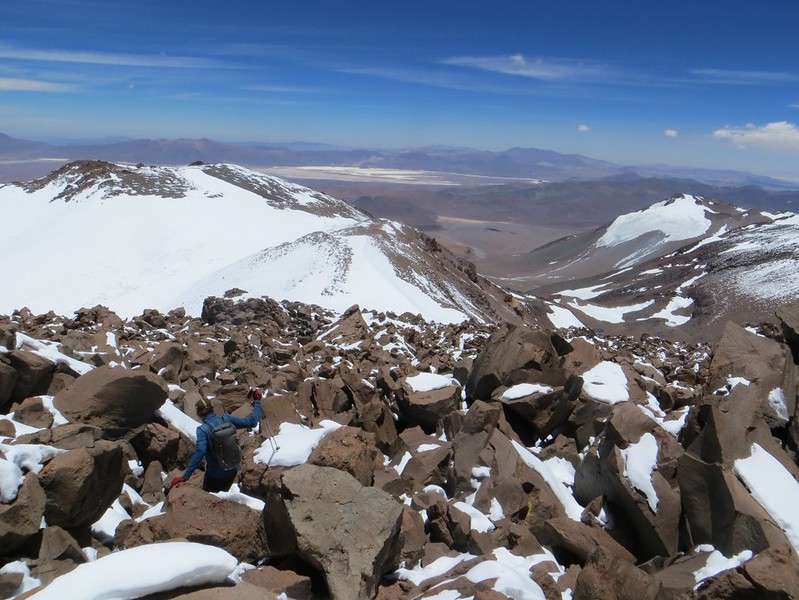
As we can follow our tracks from the ascent, we move much faster through the boulders. Lower down we spend an unsuccessful hour searching for the body of a local mountaineer from Catamarca who mysteriously disappeared on the peak last year. Various searches have been made to find his body, but as yet it remains undiscovered on the mountain.
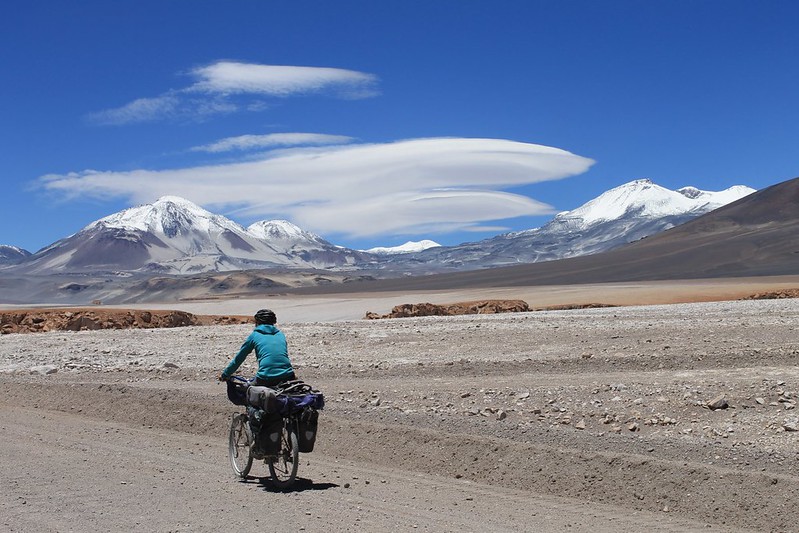
We manage to descend from the summit to our bikes at 4400m in an afternoon, and in the morning cycle east towards El Muerto. A battle between Argie and Chilean winds leads to these fascinating lennies hovering over El Muerto all day. Ojos is the peak on the right.
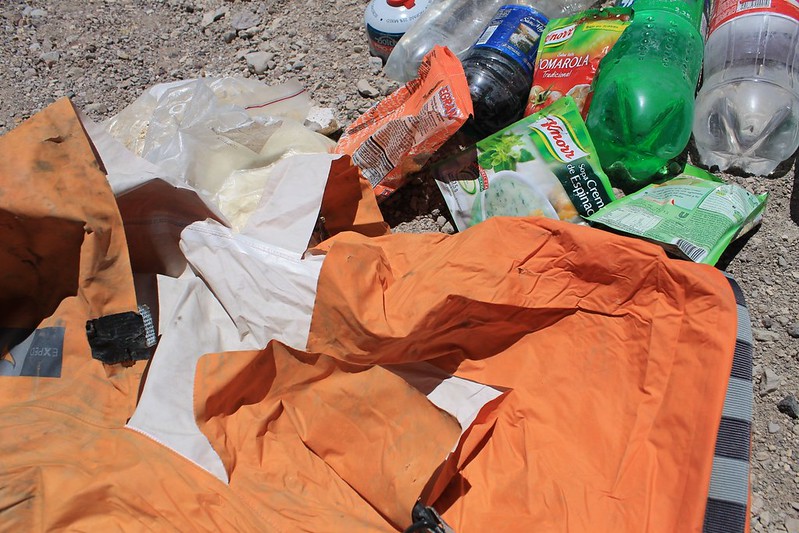
When we reach the Muerto/Ojos turn off we go to fetch the 4 days of food we stashed there a few days before. Only to discover an Andean fox has ripped open the dry bag, and eaten all the good stuff. Gone are the biscuits, salami, sugar, nuts and raisins. Strewn everywhere in the sand is the pasta. Left untouched are the oats. Luckily we’re ahead of schedule so this loss doesn’t prove too important. It just means we can’t stuff our faces with delicious Frutigran biscuits, like we’d been looking forward to.
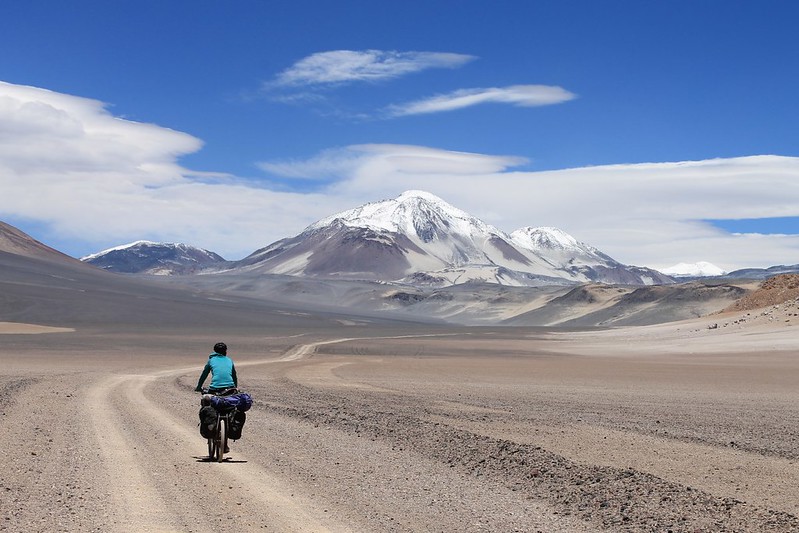
Then we continue towards ‘The Dead One’. It’s scenery like this that keeps enticing us back to the Puna.
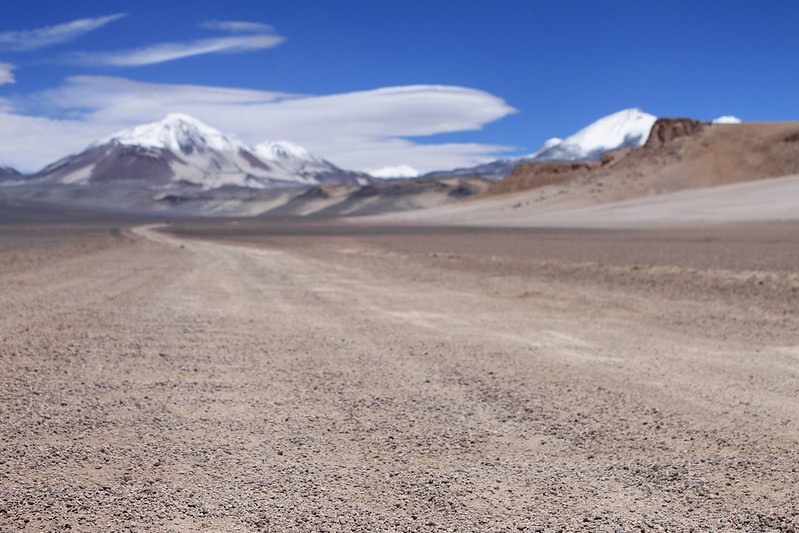
And as the road to Muerto is the same one as to Ojos, it’s in good condition. Ojos is a very popular climb from this side as (with a good vehicle and driver and excellent acclimatization) you can drive to a refugio at 5800m and climb the mountain in a day. A 6900m peak as a day walk with no need to camp! Mad. Approaching from the Argie side is a far quieter and longer endeavour.
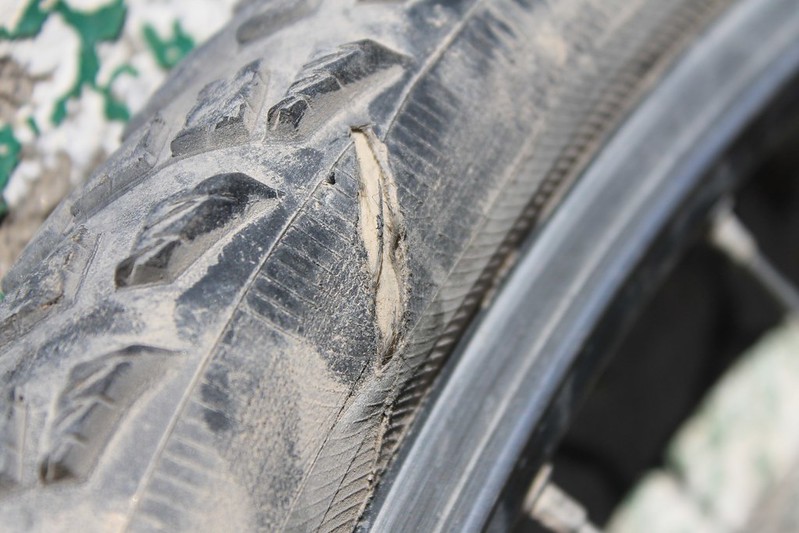
After a year of faithful service, our Schwalbe Extremes all begin to fail. In 10 days of riding two wear out and are unusable, and this, our spare gets a slash in its side wall. The other two are in bad shape too (but we’ll carry on using them for the next stage of our trip as they’re still better than anything we can buy in Fiambala or Tinogasta).

We soon arrive at Refugio Murray, a free and reasonably comfortable place to stay. Though it’s early, we decide to spend the night and socialize with the many Andinistas there to acclimatize for Ojos. The long discussion with experienced Chilean guides about what the clouds signify ends in the conclusion that the weather will change. But as it’s been ‘ok’ recently, no one knows if this means it’ll be for the better or worse.

For an hour at Refugio Murray that evening the clouds are more beautiful than any we’ve ever seen. Lennies over Muerto, huge cumulo nimbus over Mulas Muertas, these things over Volcan Laguna Verde.

In the morning it’s an 18km cycle to the base of Muerto. The road isn’t too bad, and we have to push less than half a km.

Camp is relatively low at 5100m, so in the morning we set off at 05:30. We have company for a change – Fabio from Switzerland, and his Chilean guide Fernando.

A rare shot of the both of us. Very useful having other people with us on the summit! Haz appears to have shrunk 10cm during the climb…

After reaching camp, the clear skies rapidly disappear. We pace the 18km back to Refugio Murray, pursued by storm clouds.
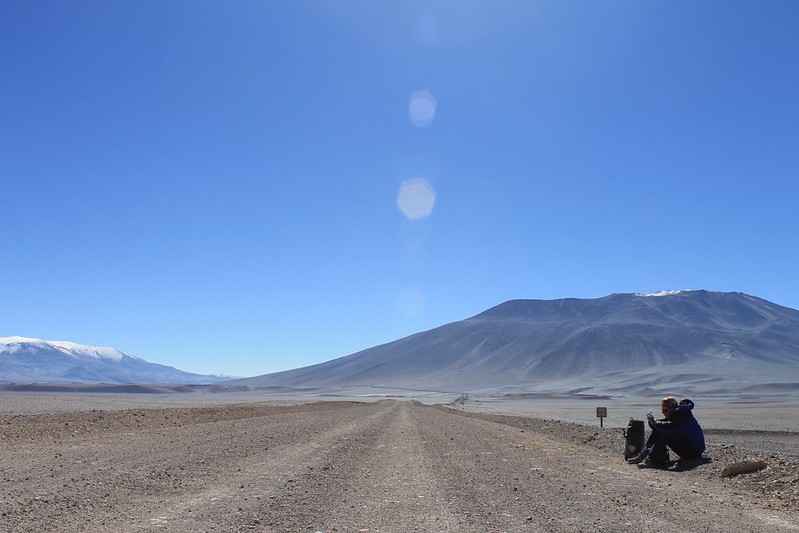
But no lightning or snow ever reaches us, or the refugio. In the morning we head back to the main road and hang around waiting for a lift to Maricunga to get our Chilean exit stamps. It’s a pain in the arse for mountaineers coming in from Argentina that the Chileans put their passport stampers 100km from the border.
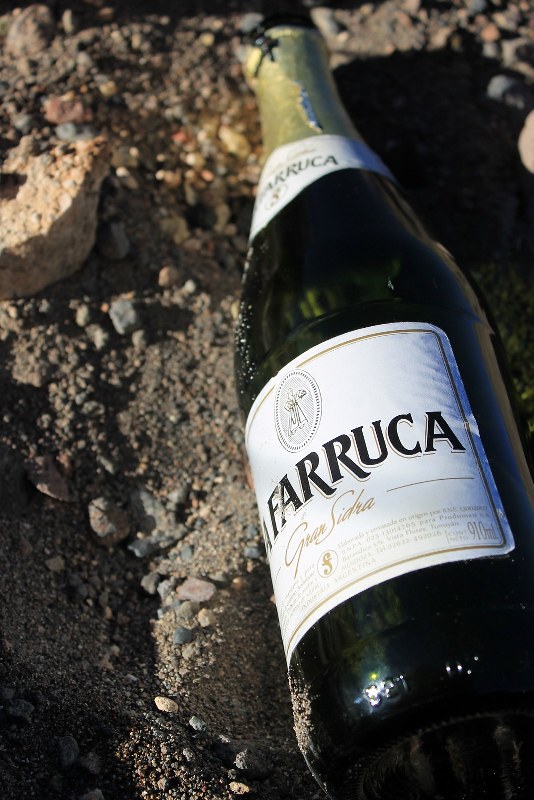
But we get lucky with lifts. A lovely family from Mendoza takes us west, and a Buenos Aires couple take us back east. (In our experience, the Argies are far more likely than Chileans to pick up hitch hikers.) Still, it takes most of the day and we only have time to cycle 2 hours before the wind and some light snow sees us set up early camp by the road. A bottle of cider warms us as Haz prepares dinner.
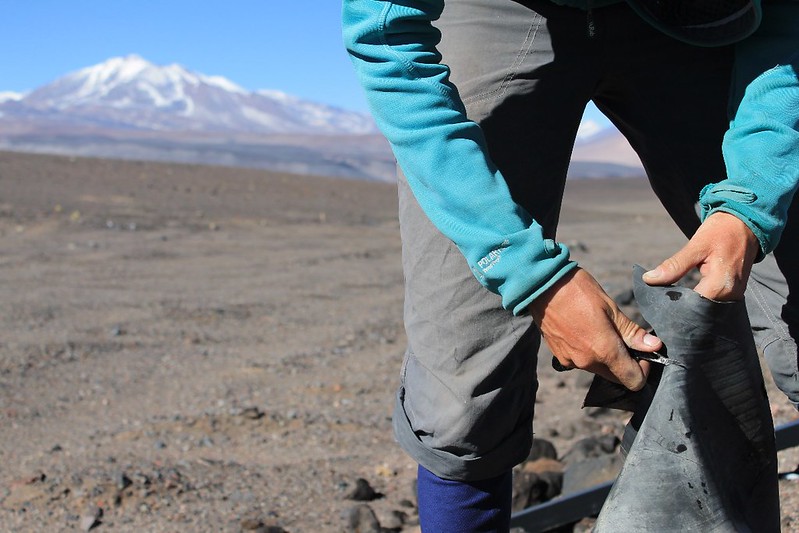
In the morning our tyre issues are alleviated when eagle-eyed Haz spots an old 4×4 inner tube by the road. Out come the Swiss Army knife scissors to cut us a load of patches to use as boots on the inside of all our tyres.

Some parts of the descent from Paso San Francisco to Fiambala are truly spectacular. First the zigzags down to Las Grutas, with views of Incahuasi, San Francisco and the lakes at their base. Then this section near Refugio 4 at Las Losas.

The 2000m descent from Refugio 3, where we’ve spent the night, means we’re in Fiambala before the shops close for the siesta. Our average speed for the day is 25.1kph. Pike whips out his notebook to ensure this gets correctly recorded in the Max/Min section of our Stats page.

We reach town having gone 115km – our first 100km+ day since September 2012! It’s also only the 2nd day in that period that we’ve spent all on tarmac. Probably just a coincidence. Back in Fiambala it’s rest time for another week before we head out on the last part of our Puna 9 trip…
[flickr_set id="72157639879419604"]
